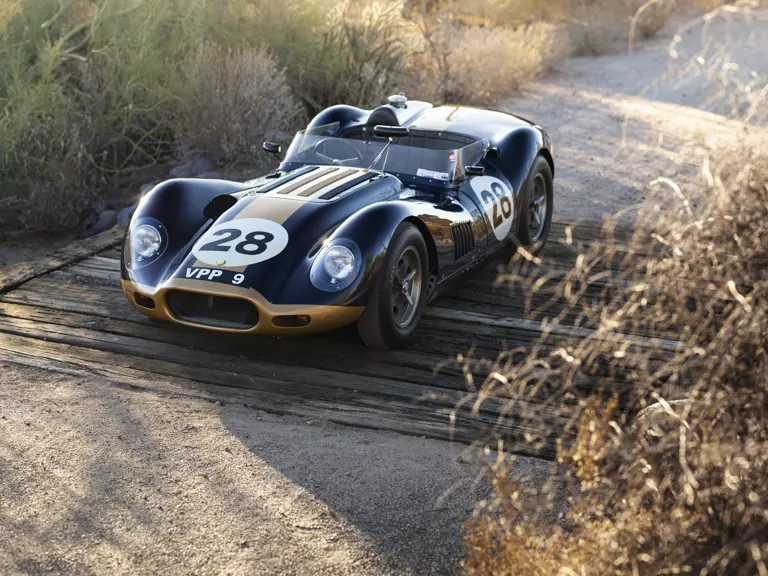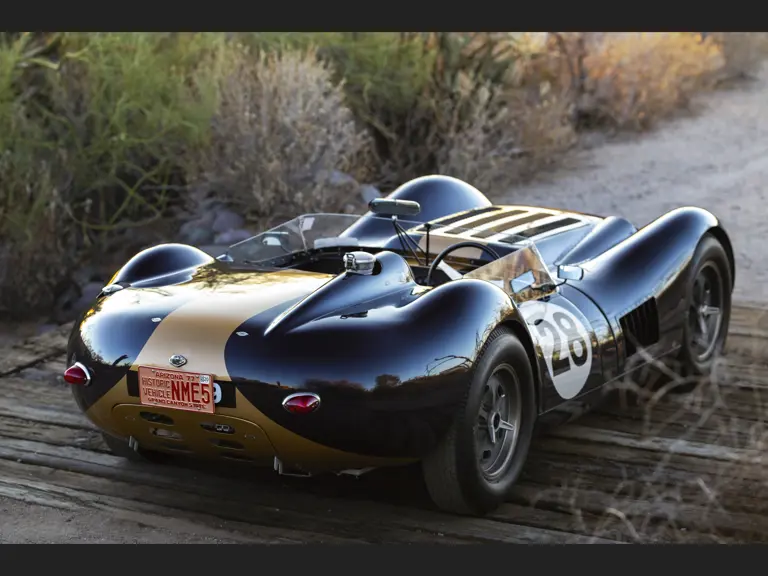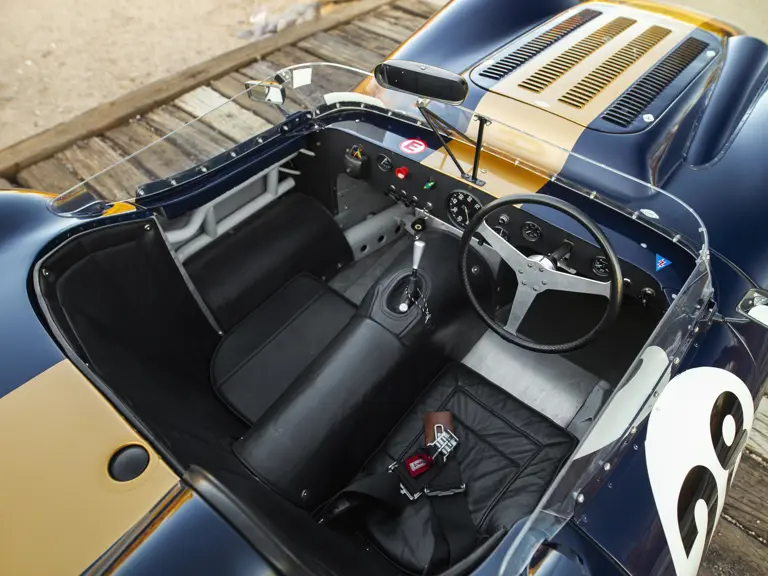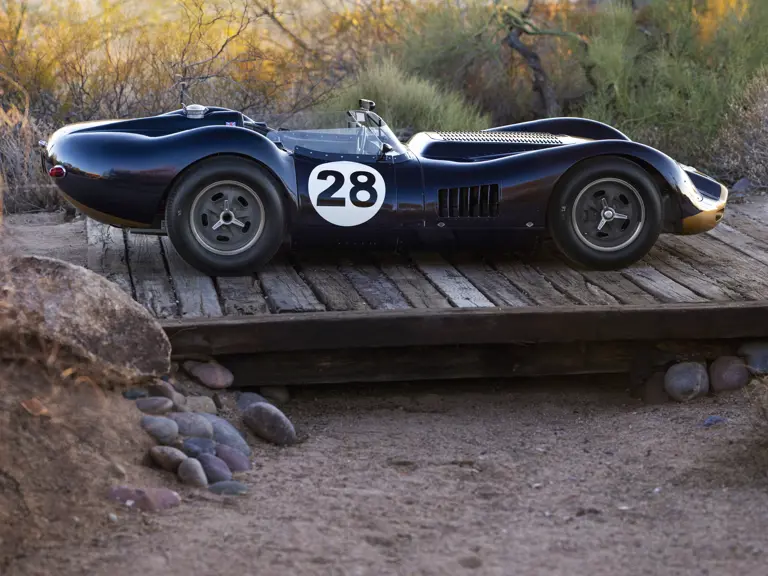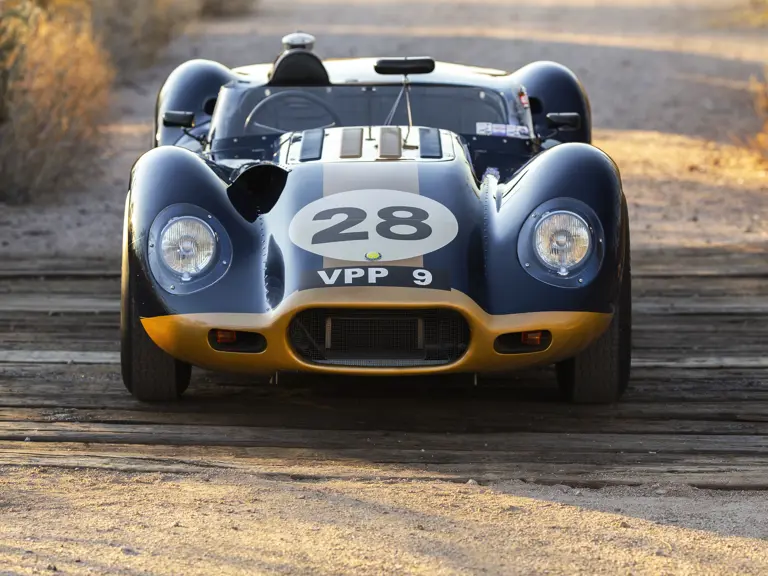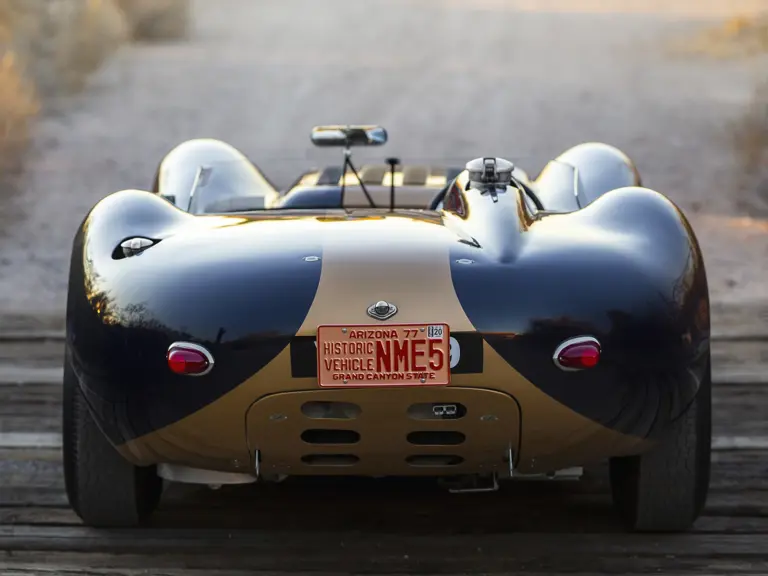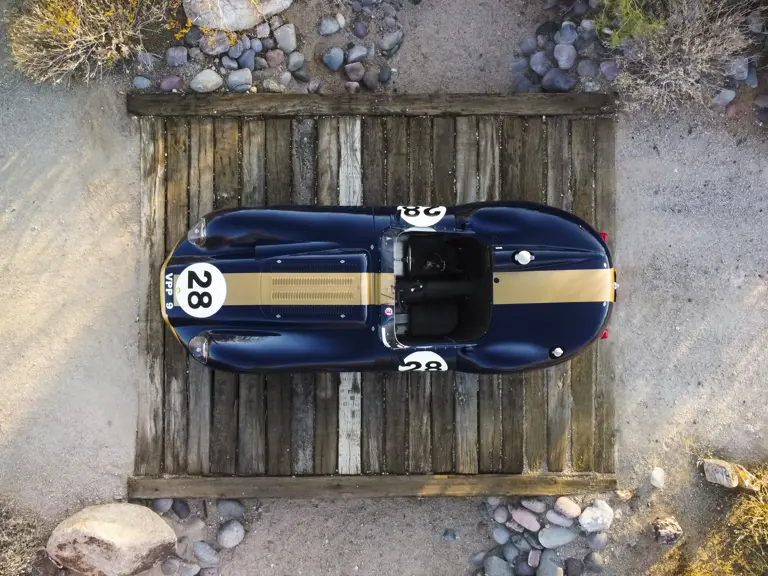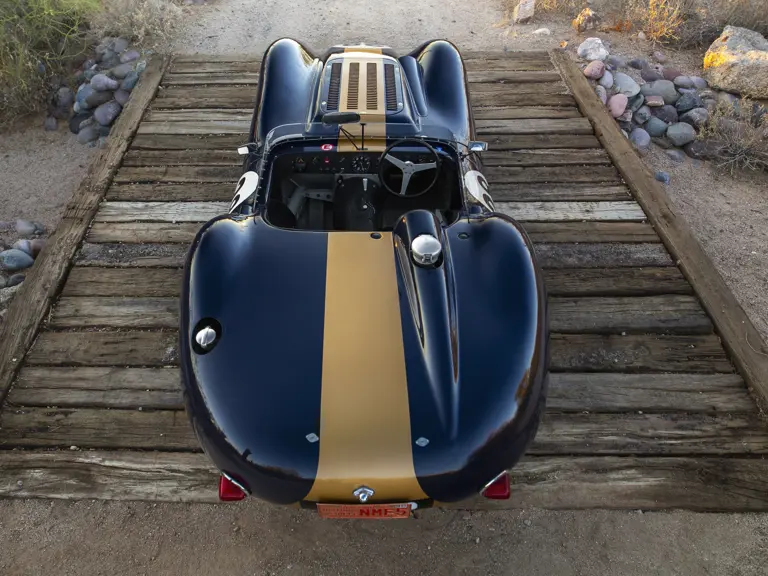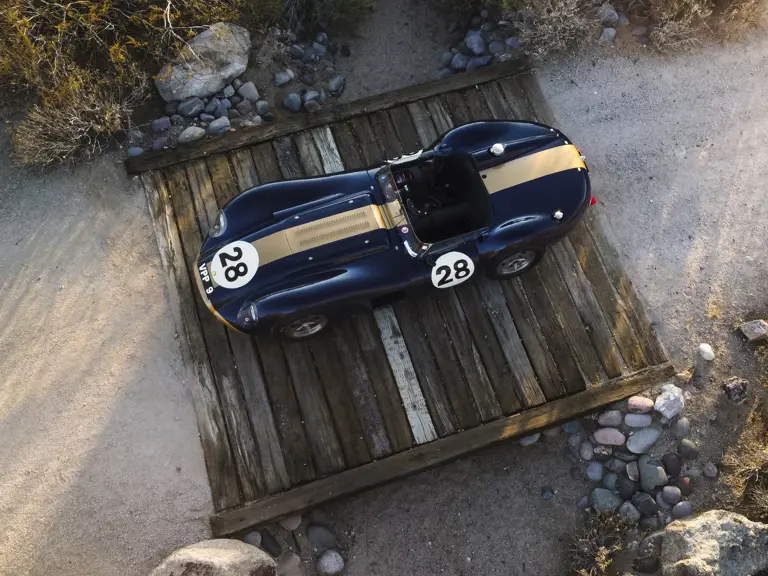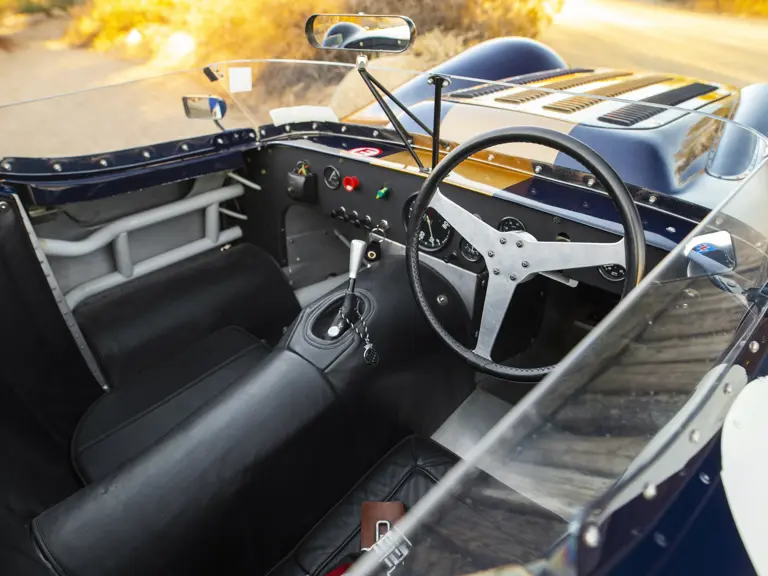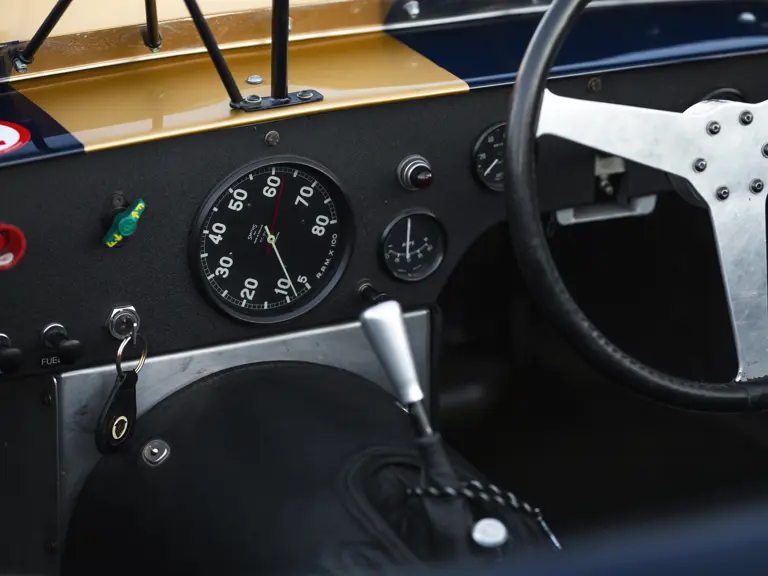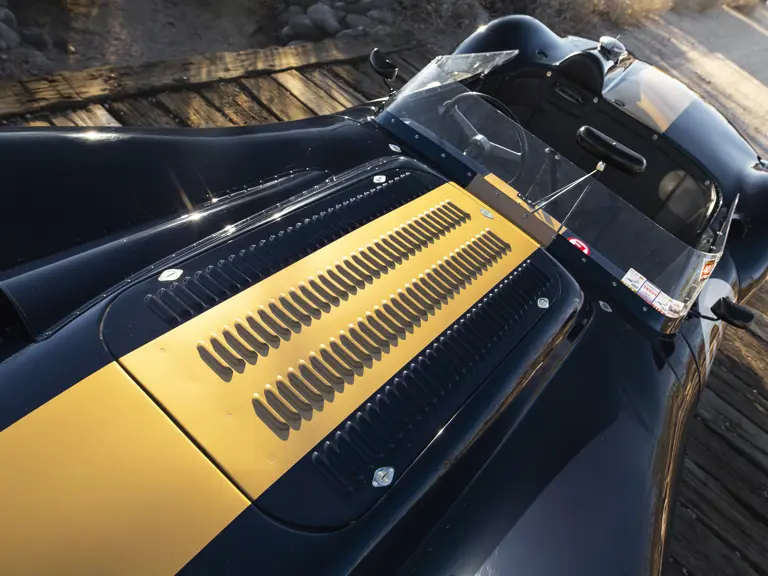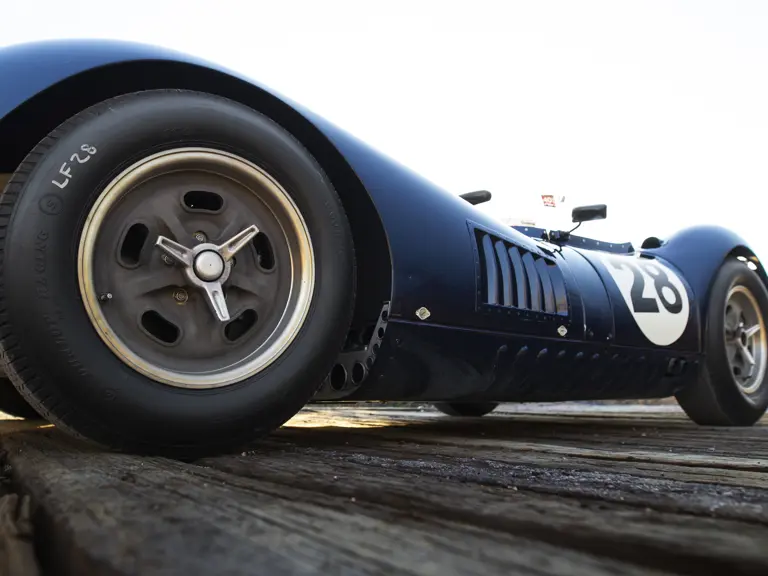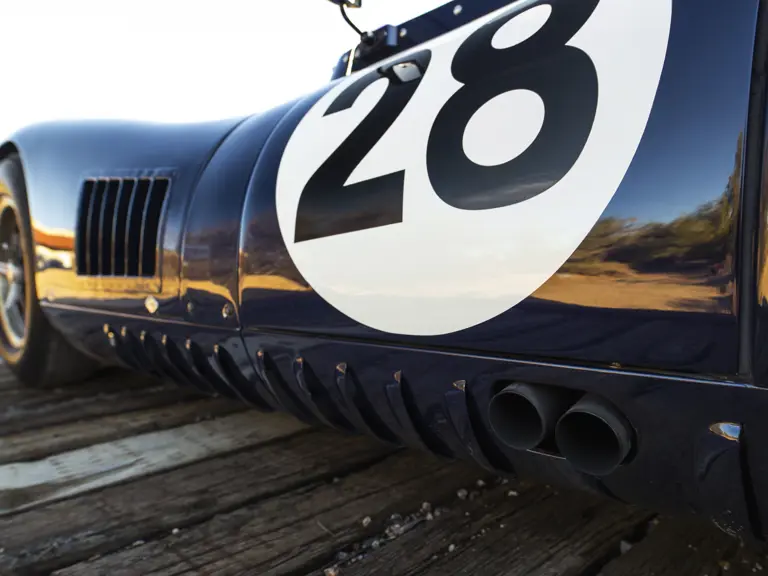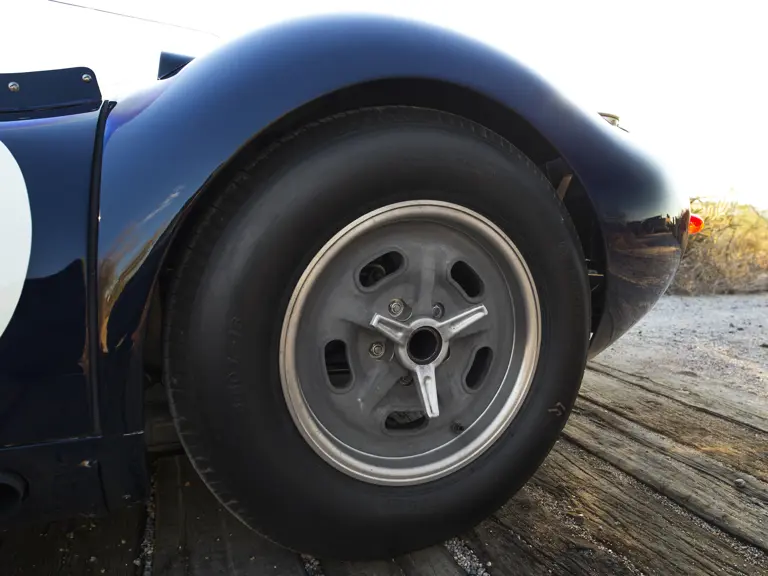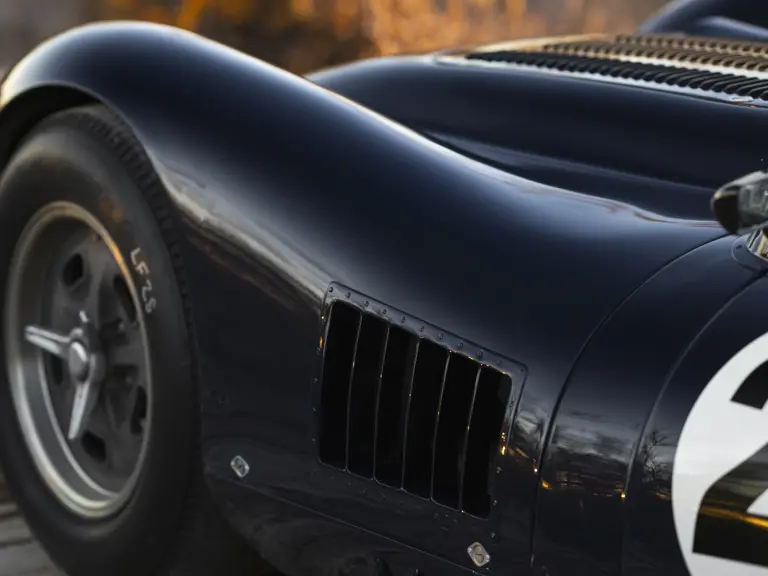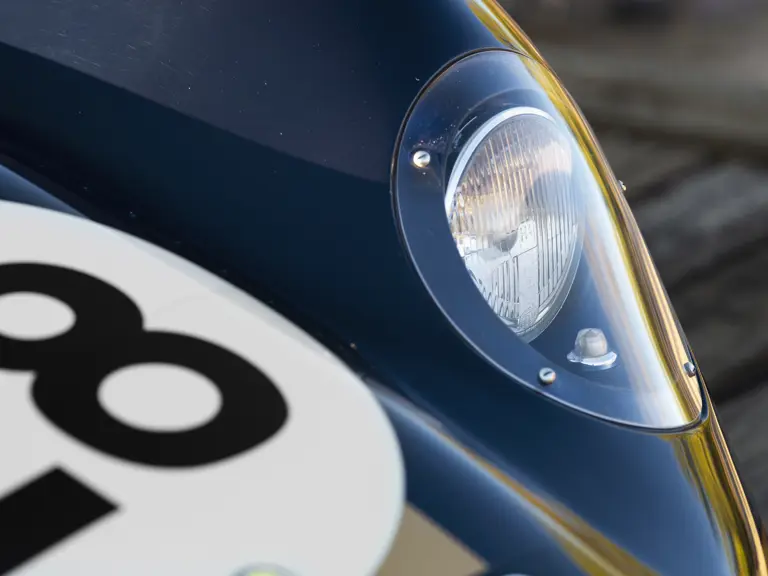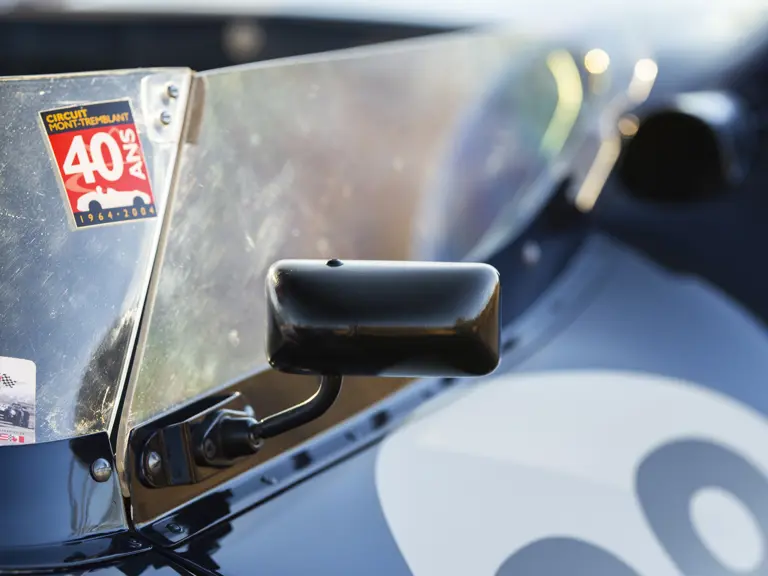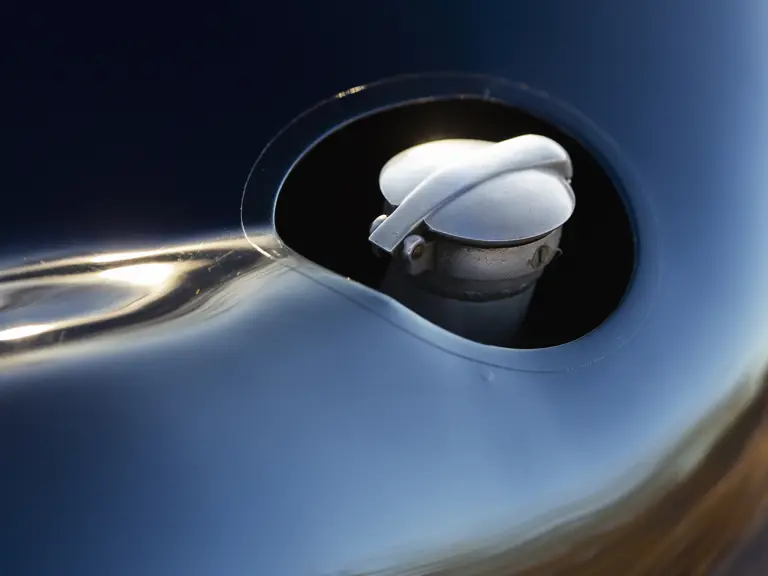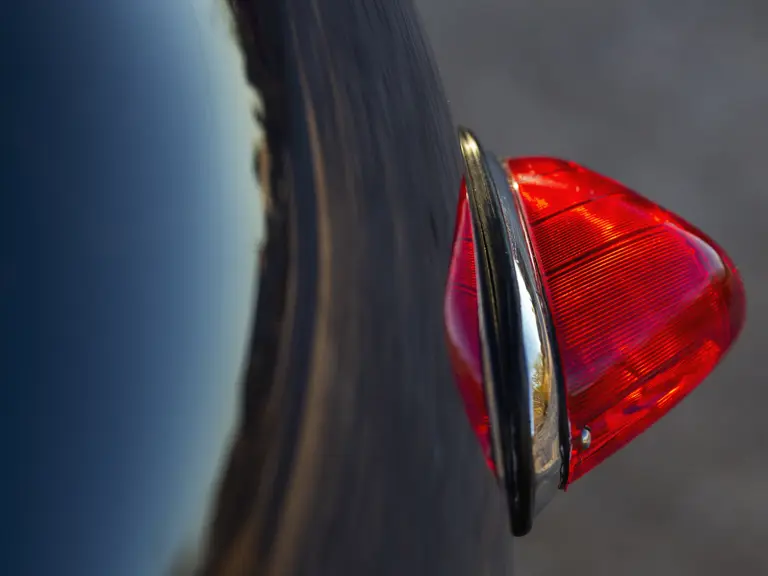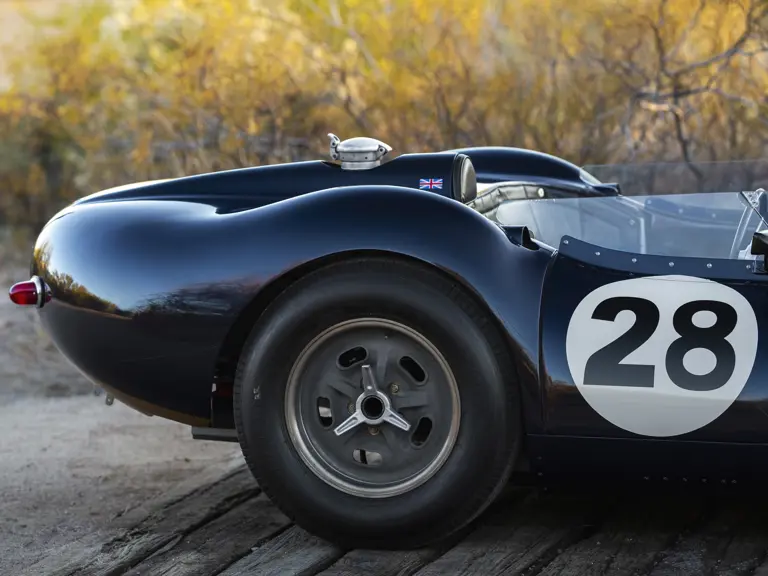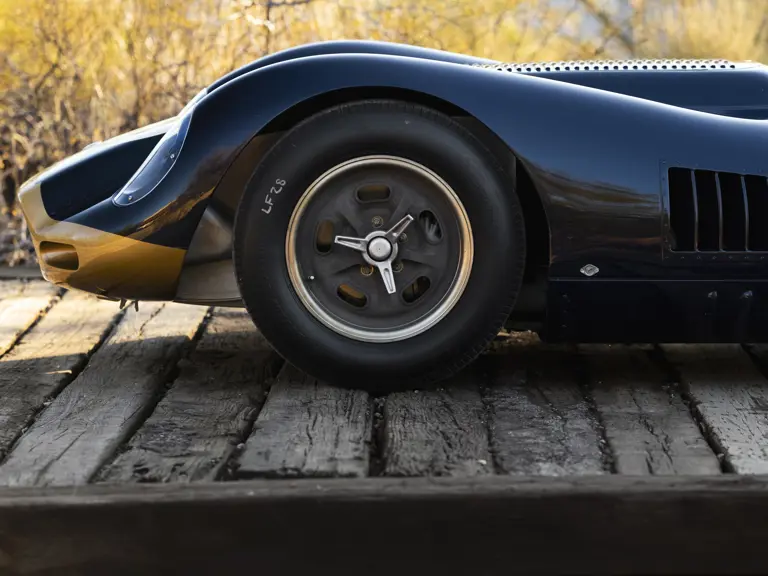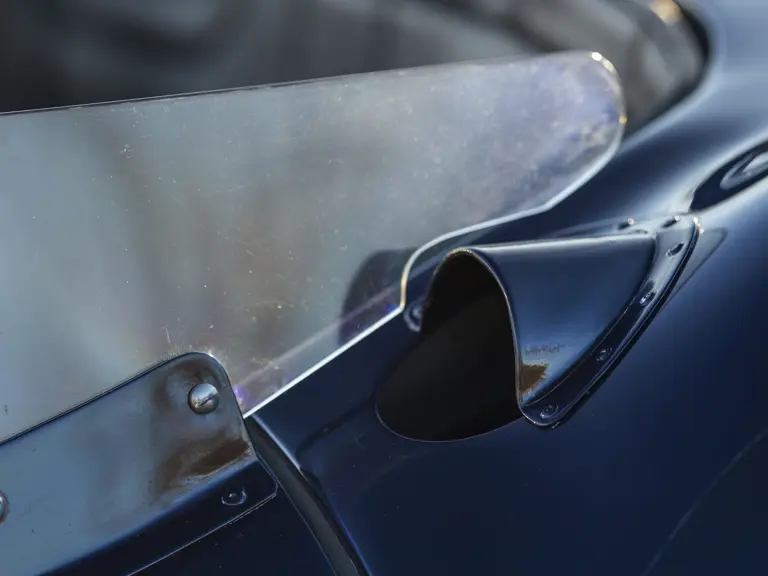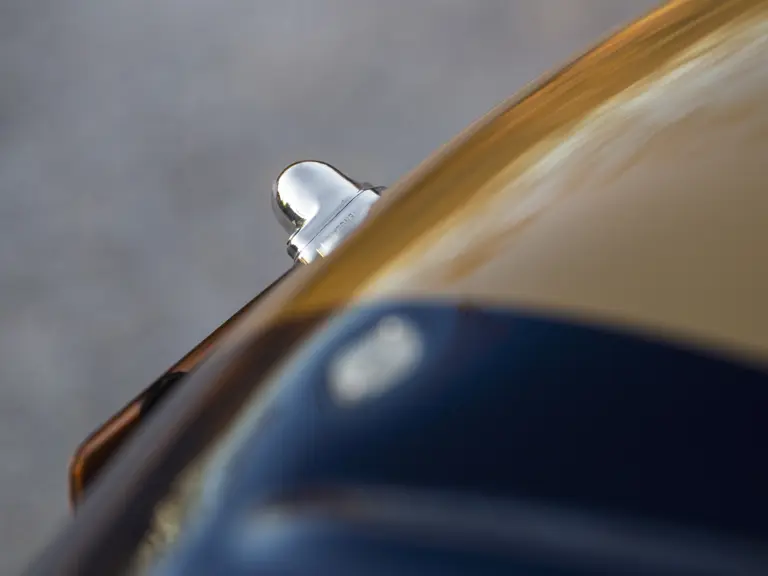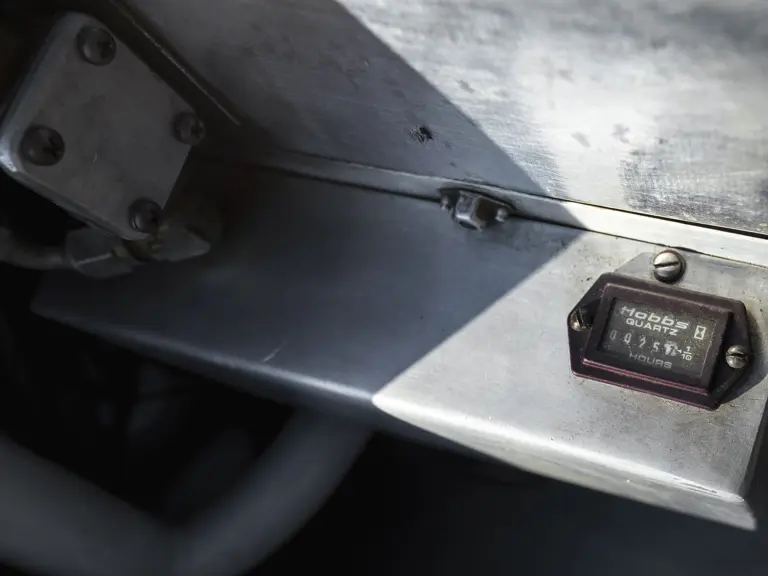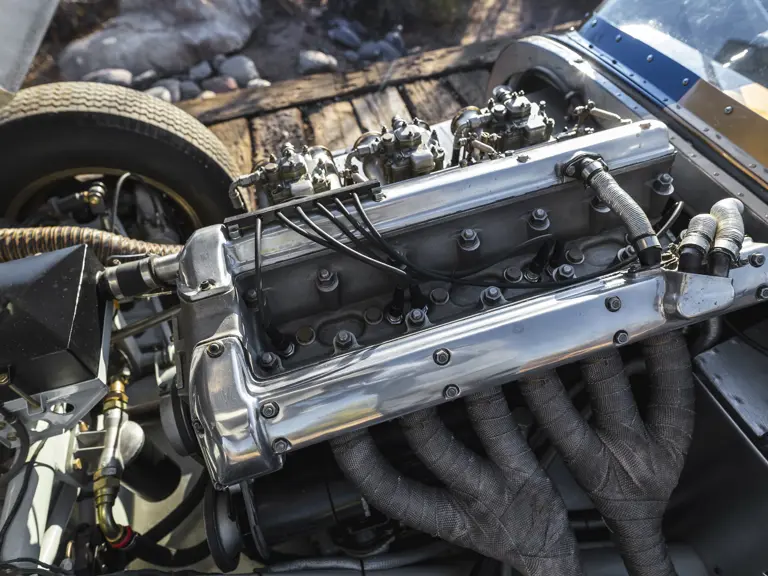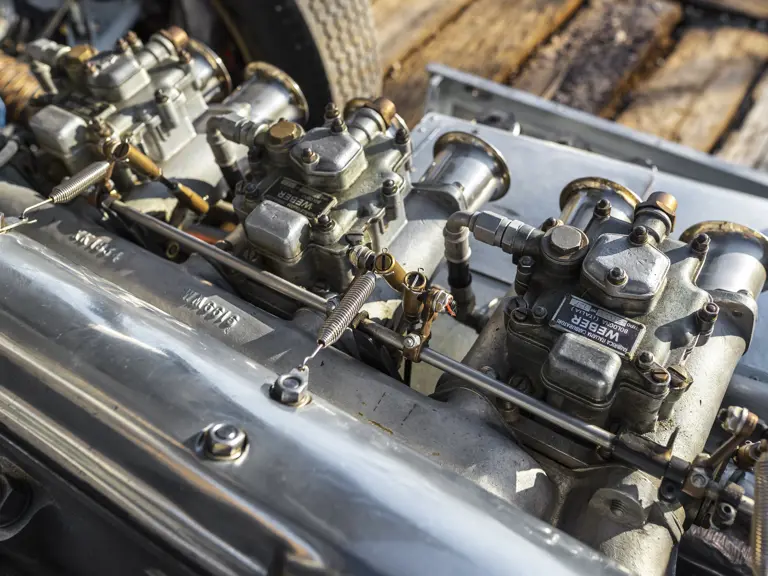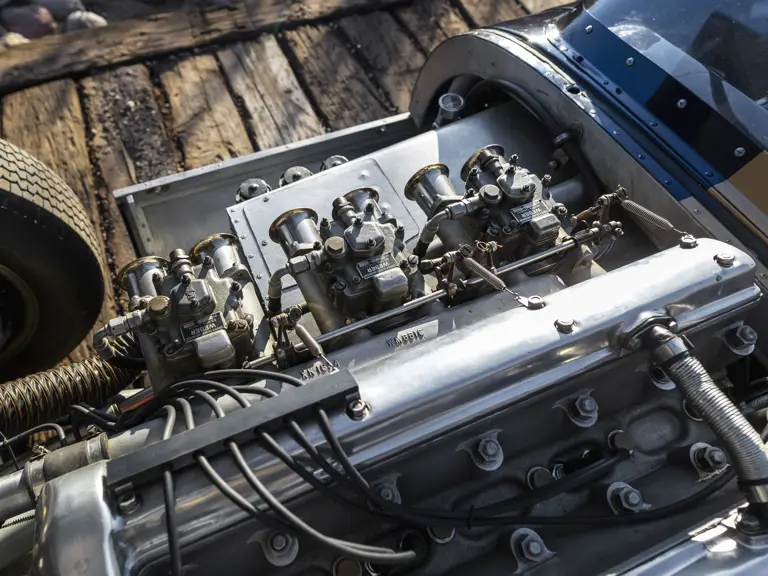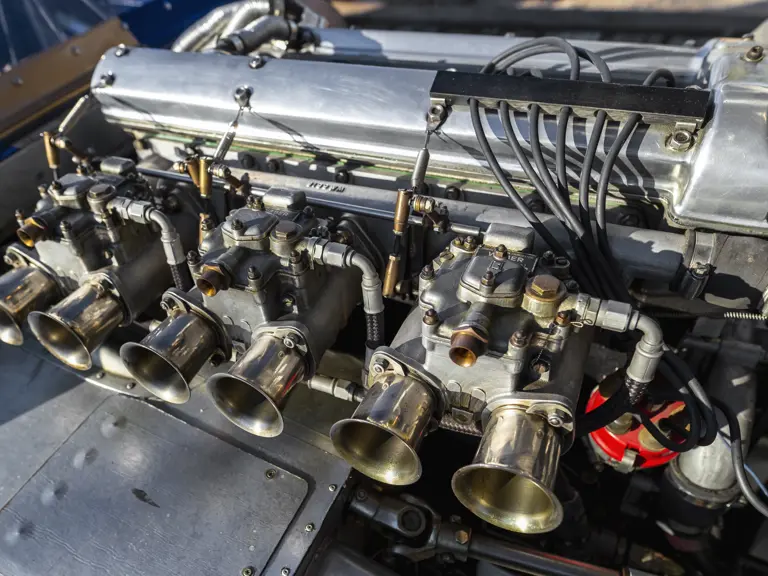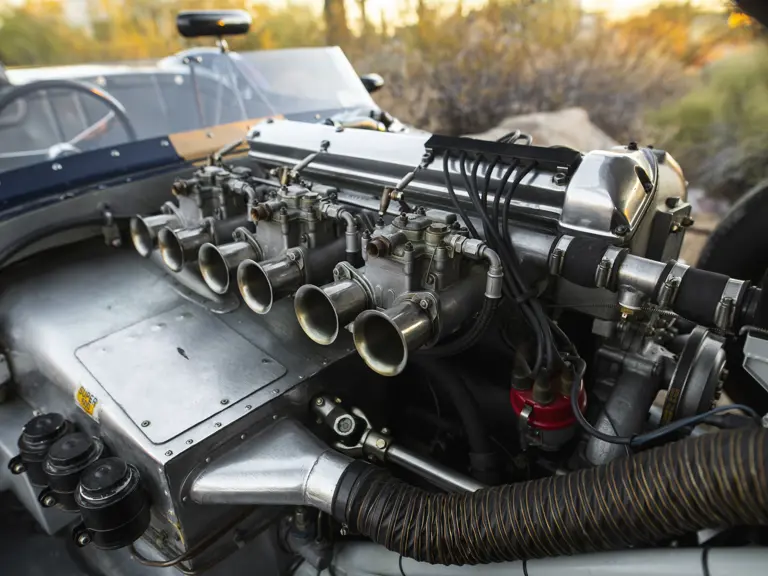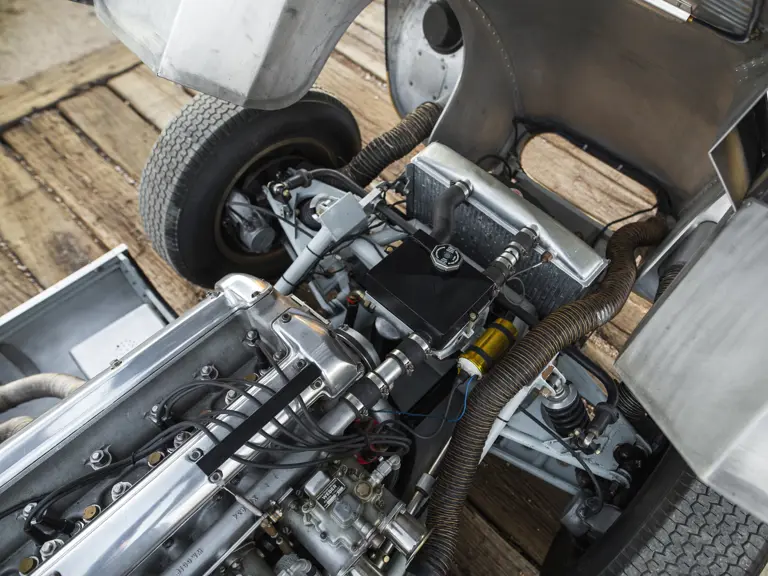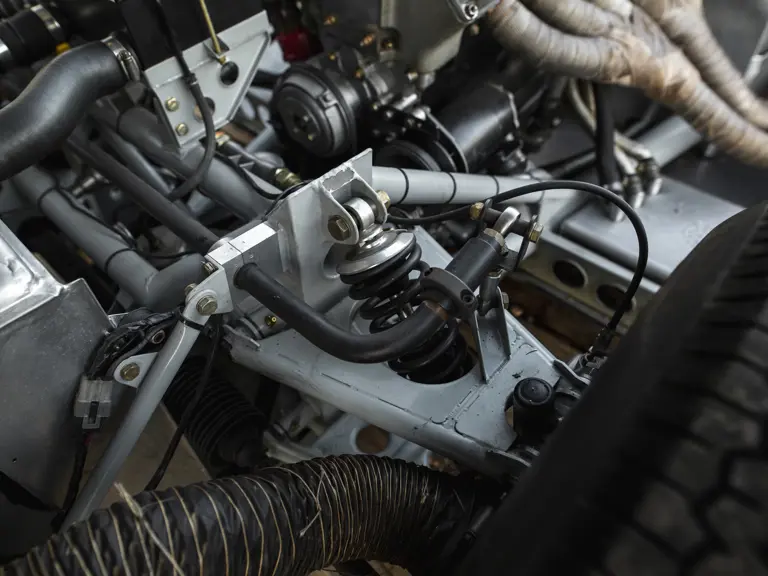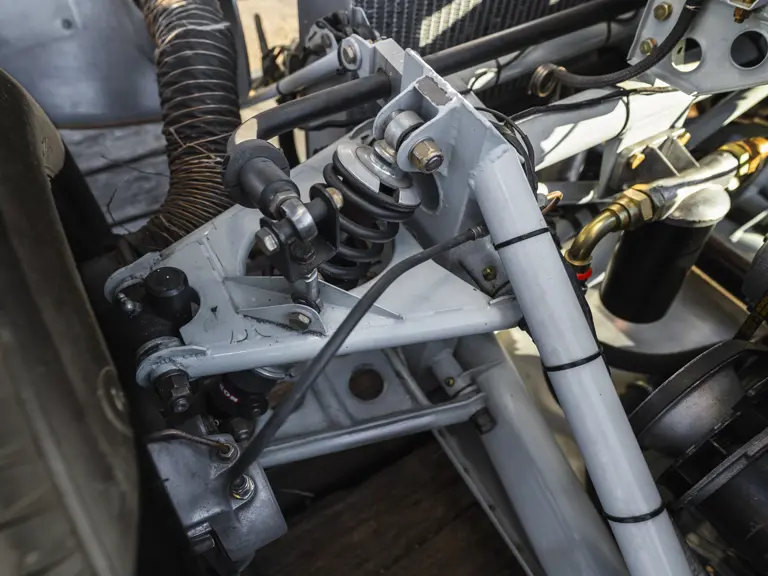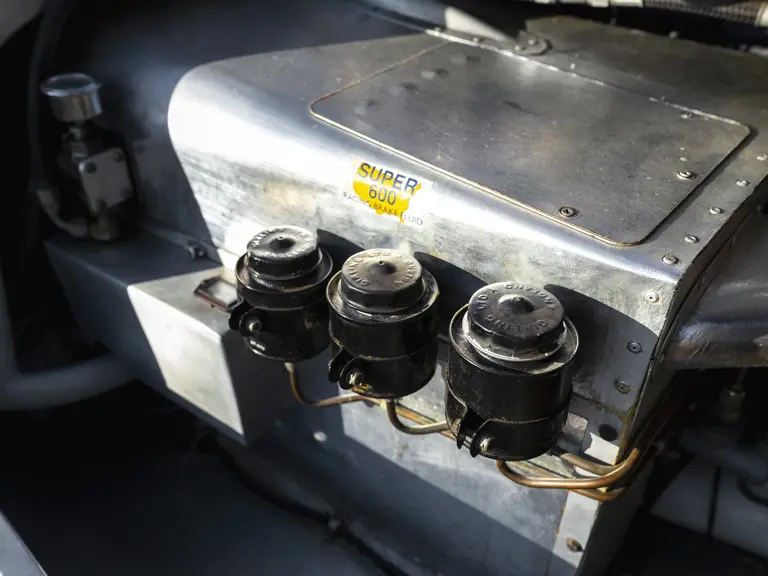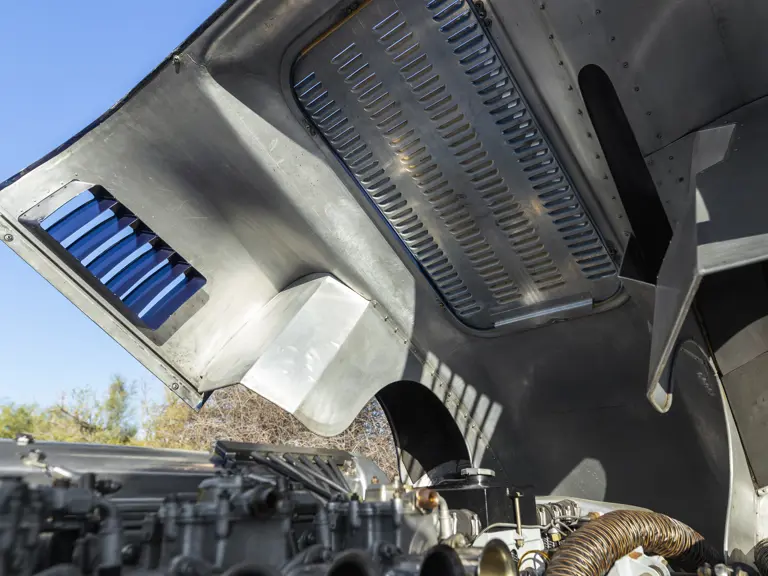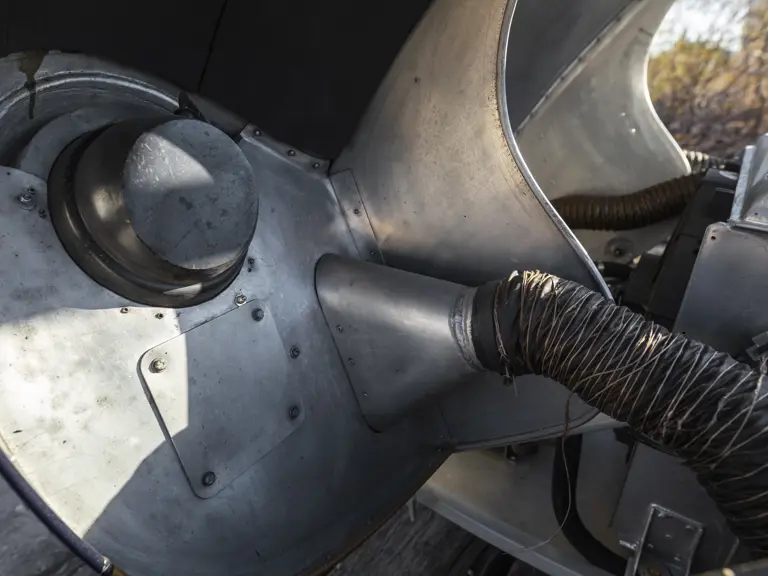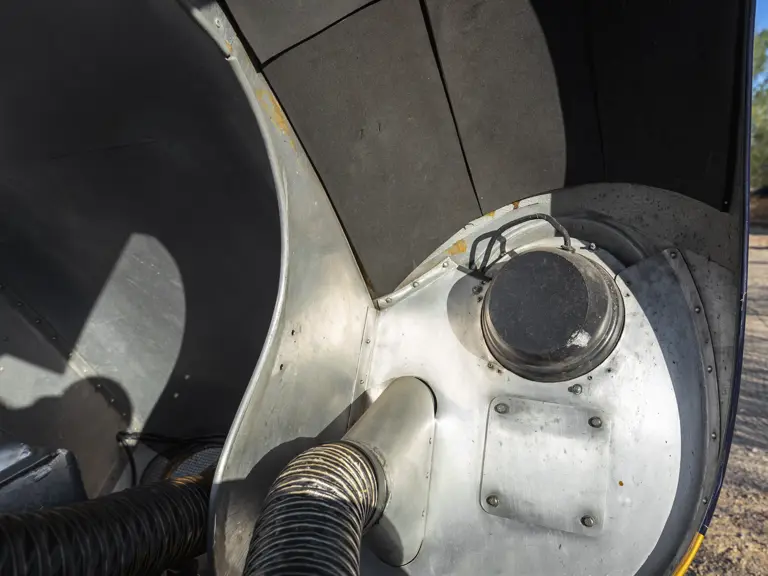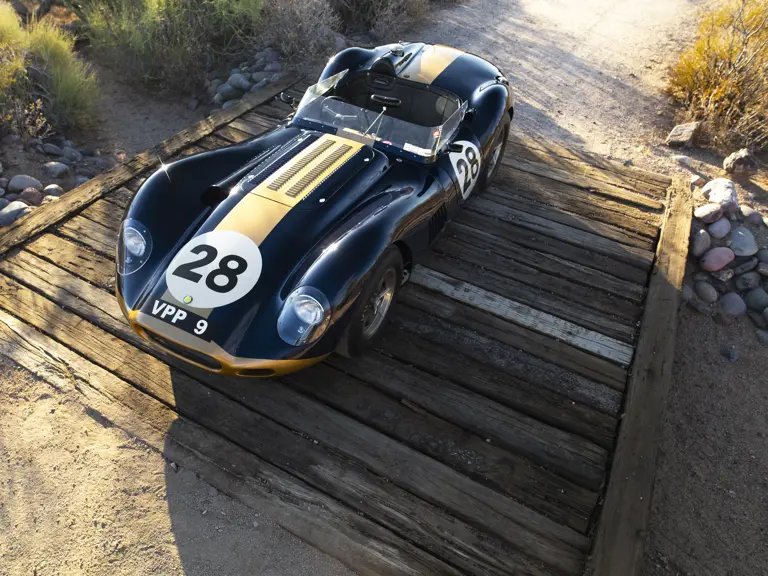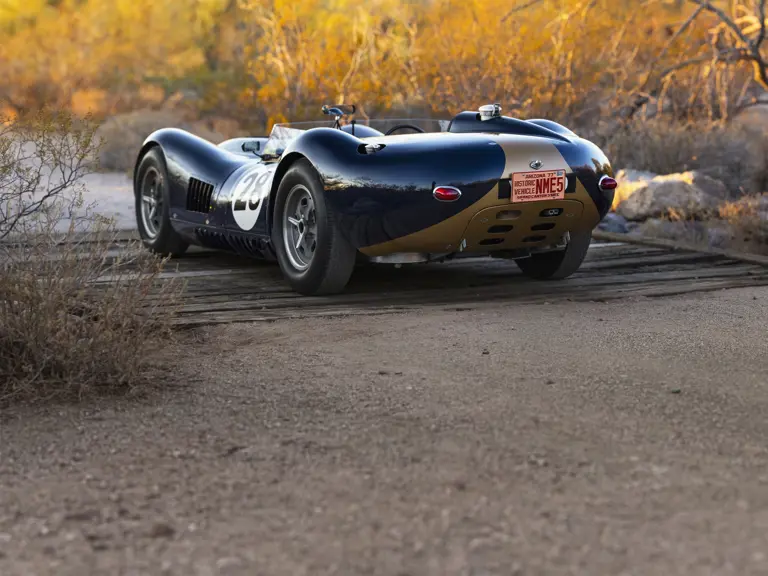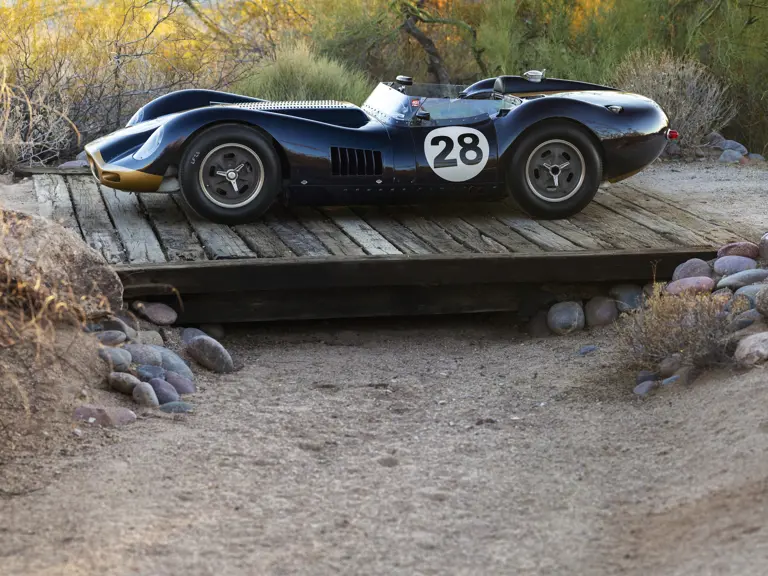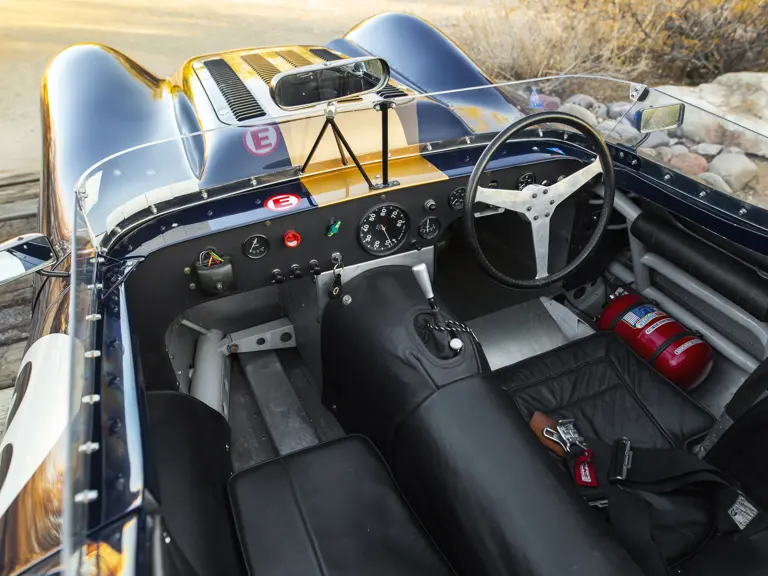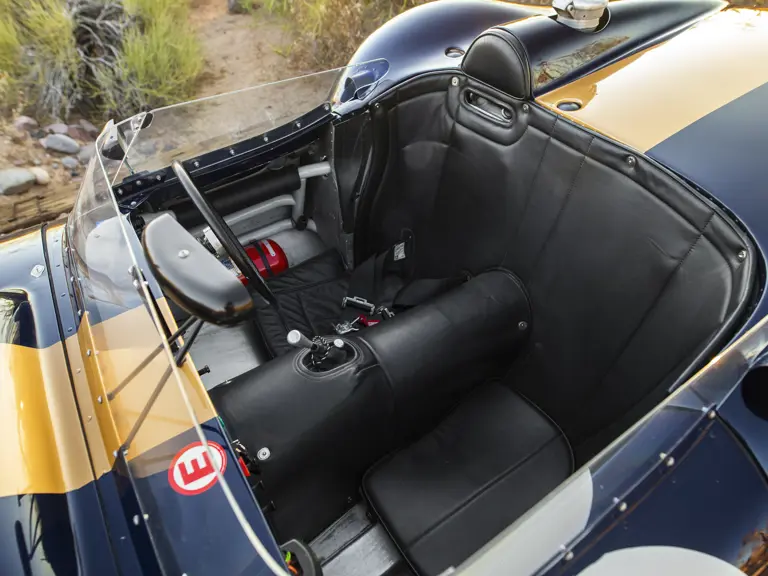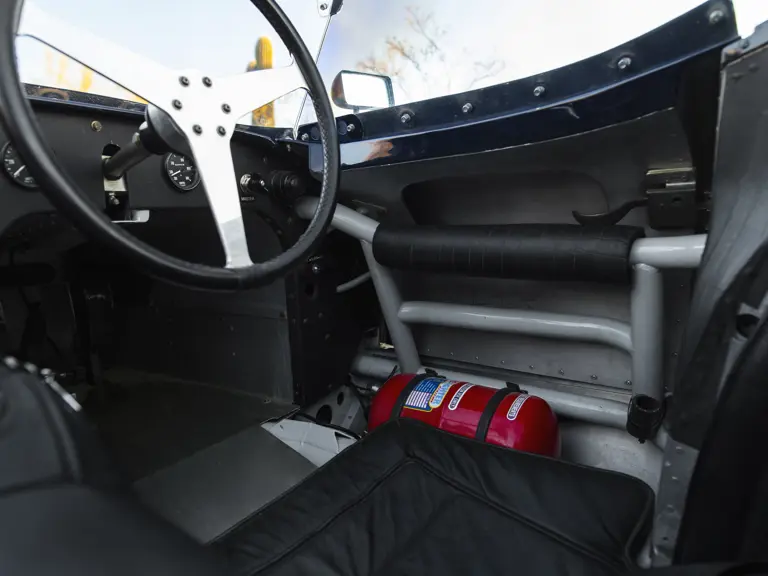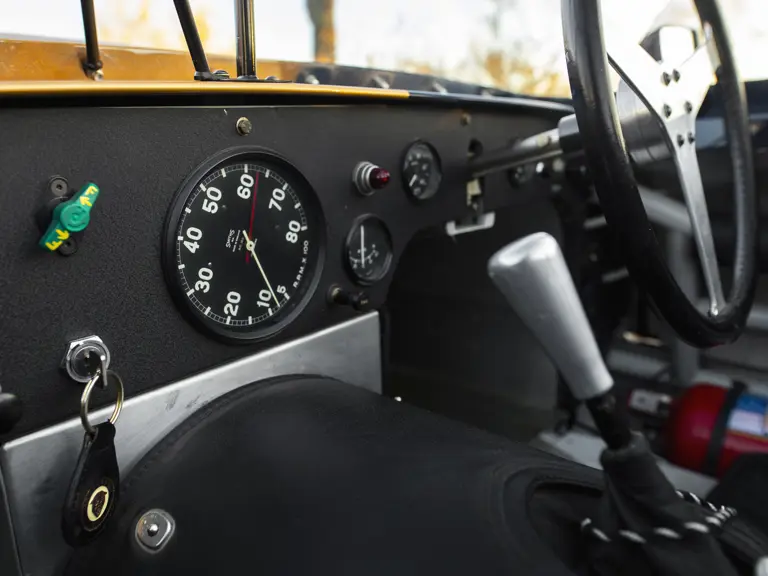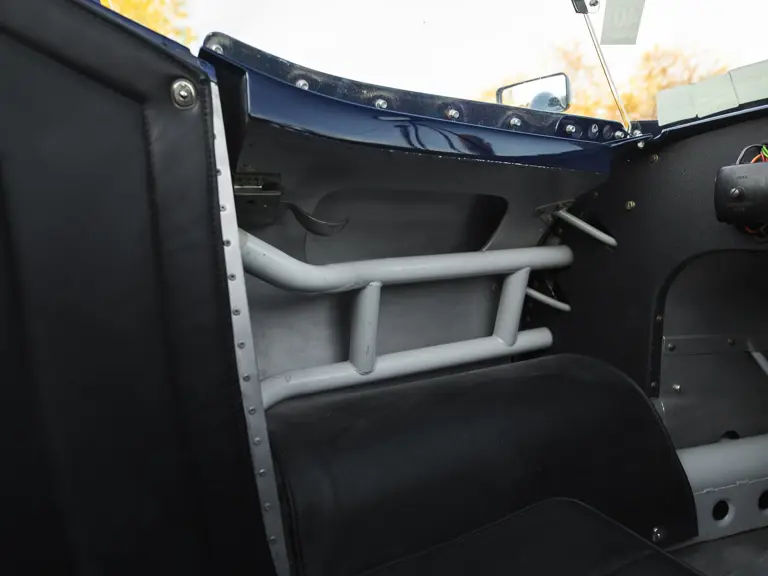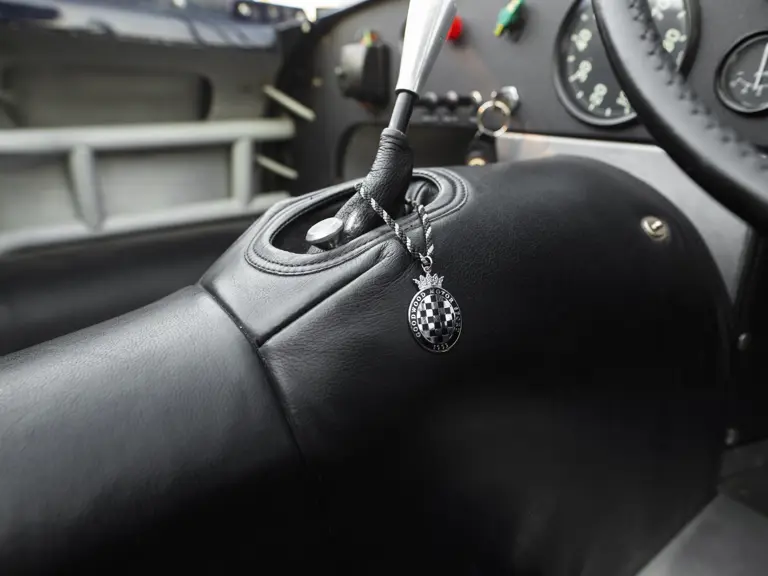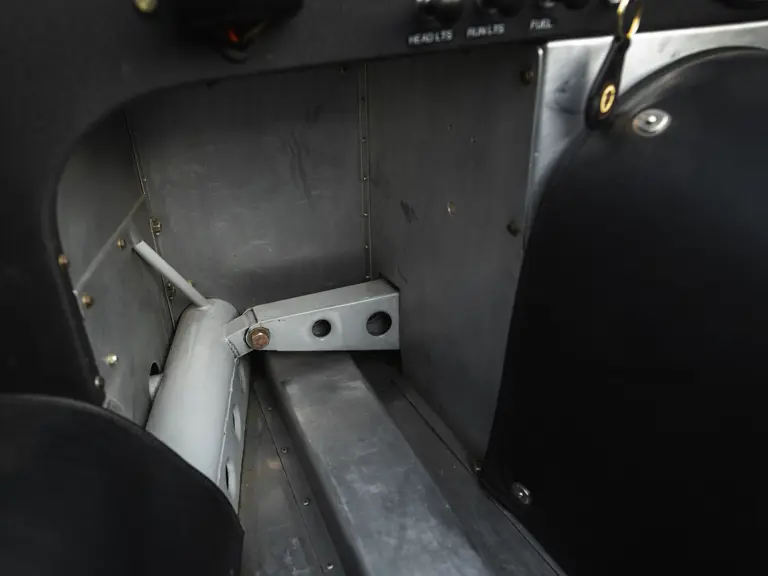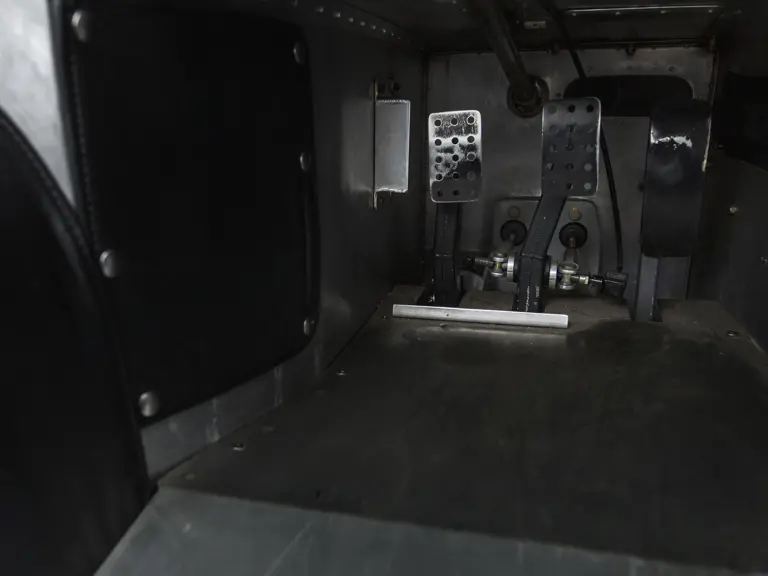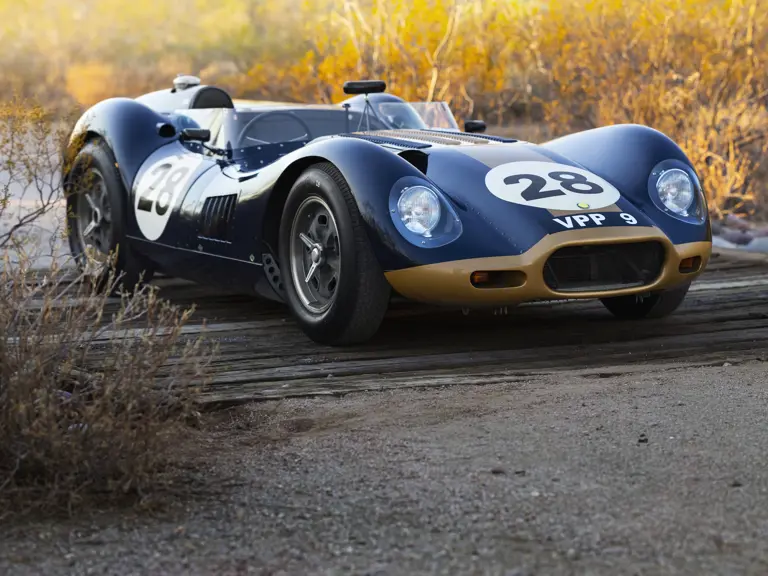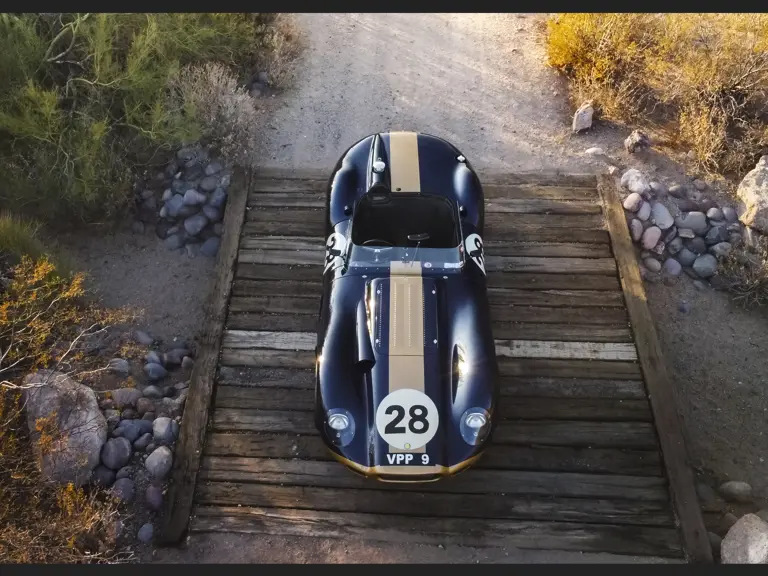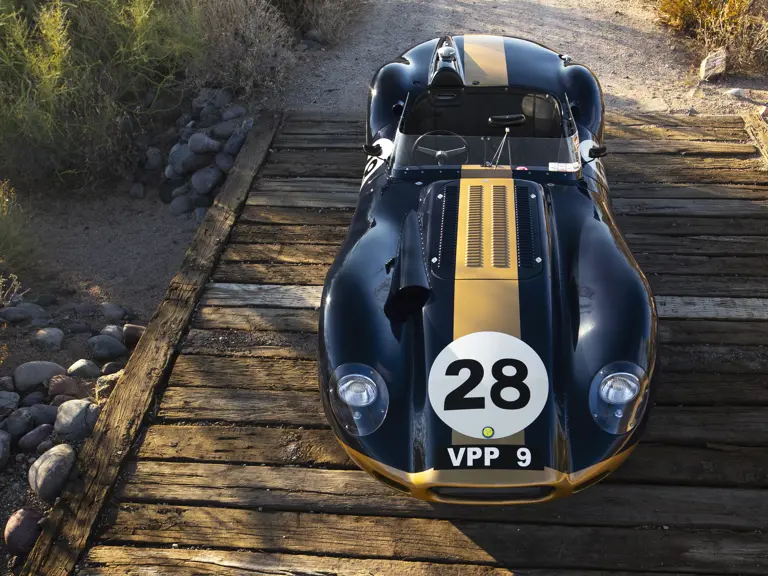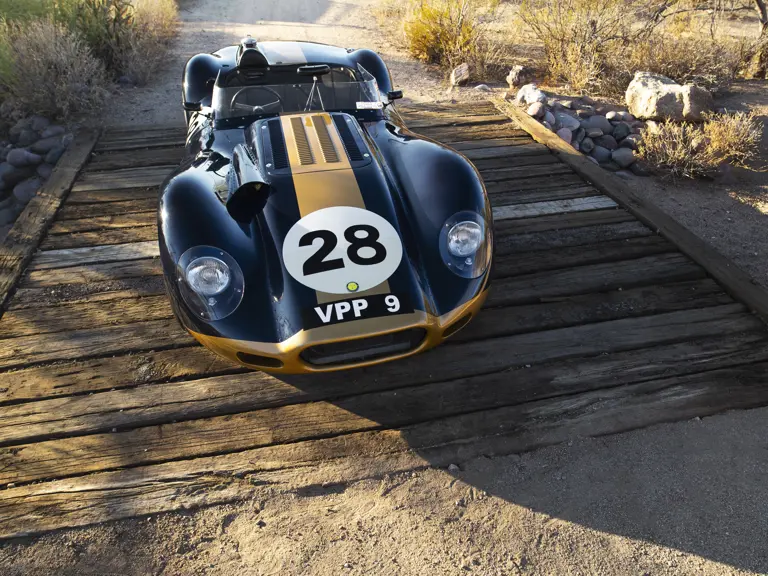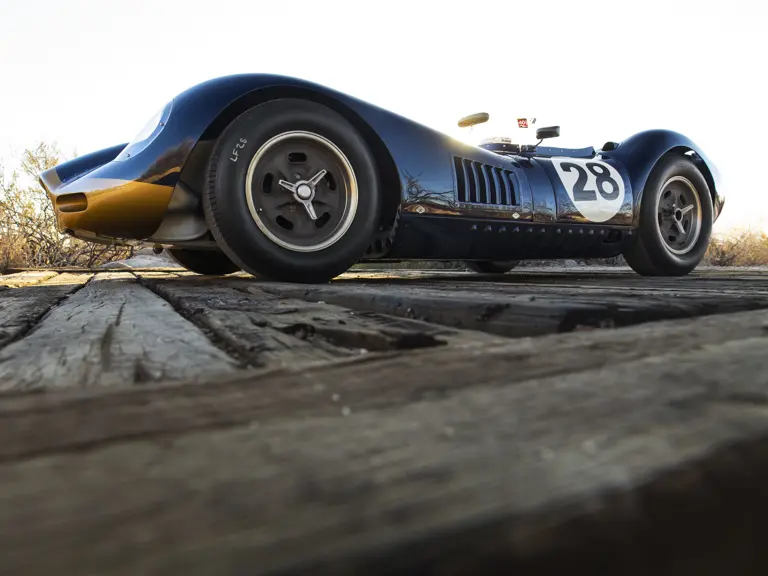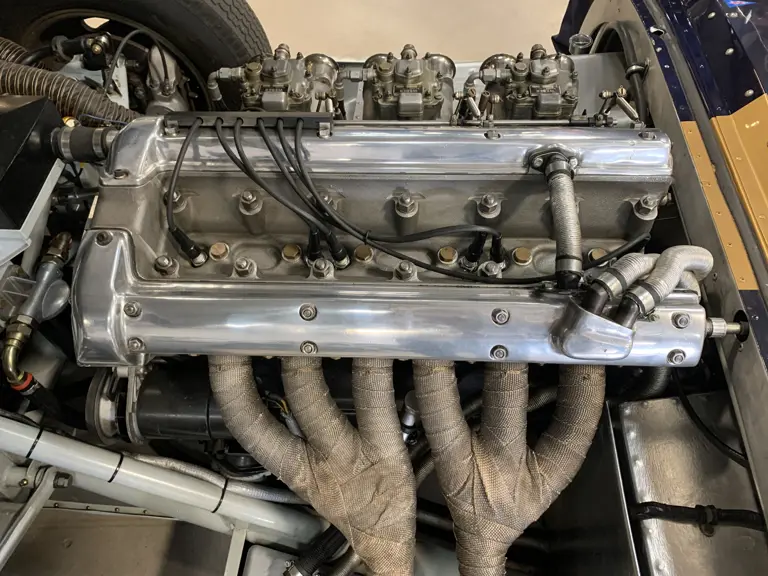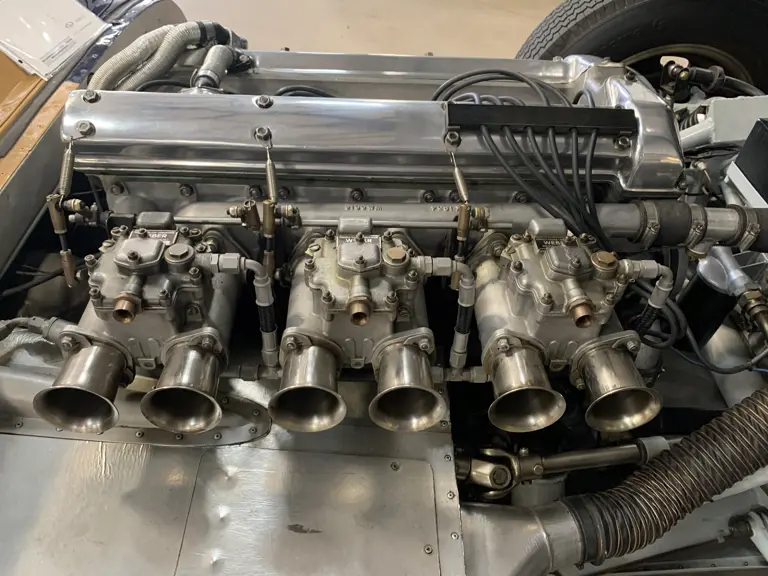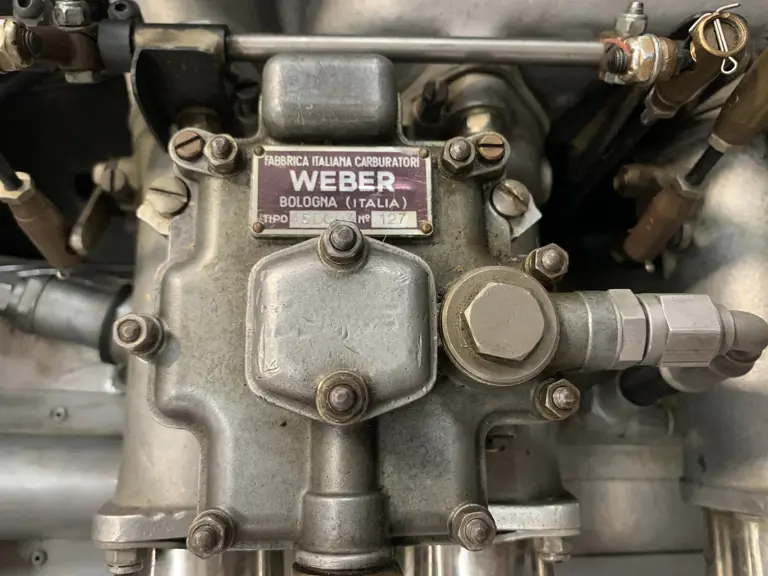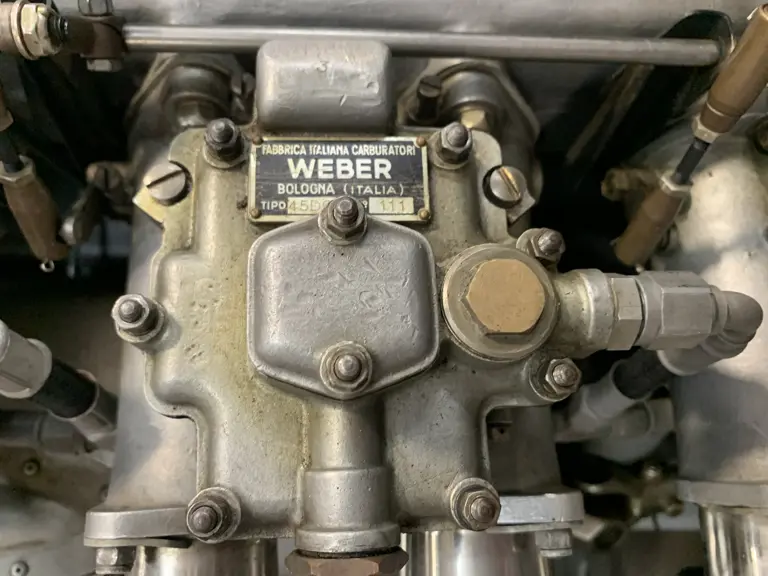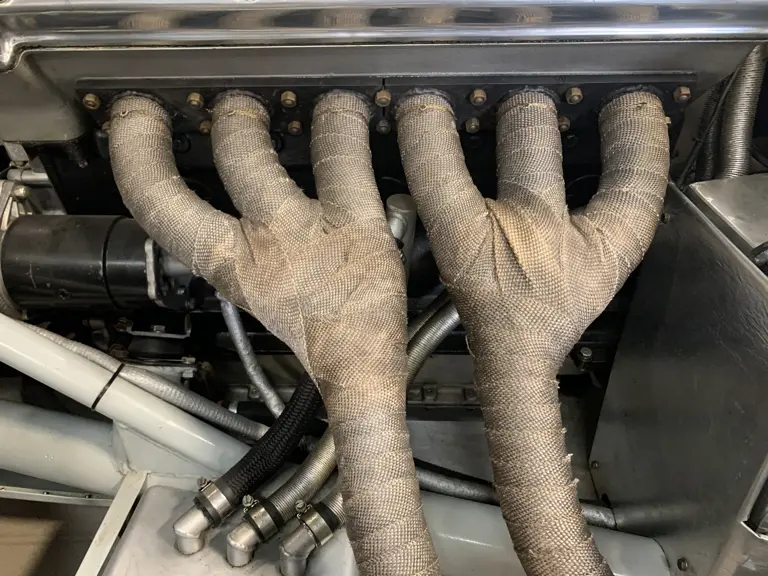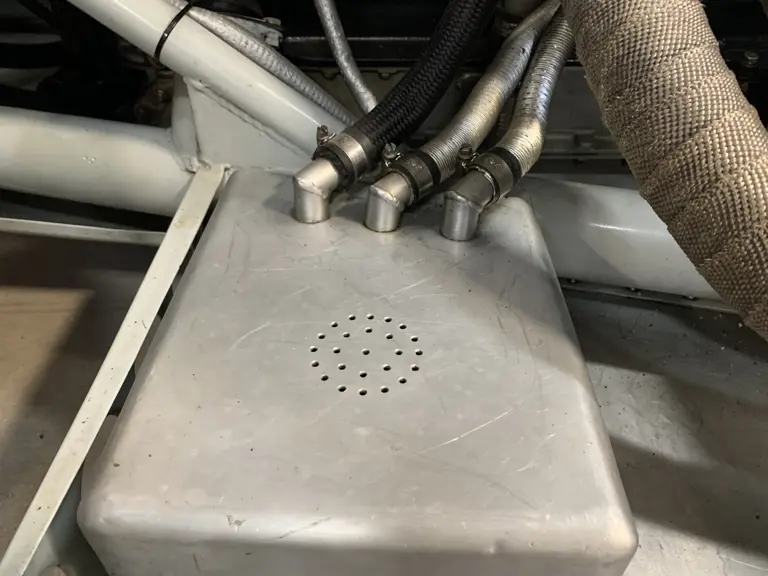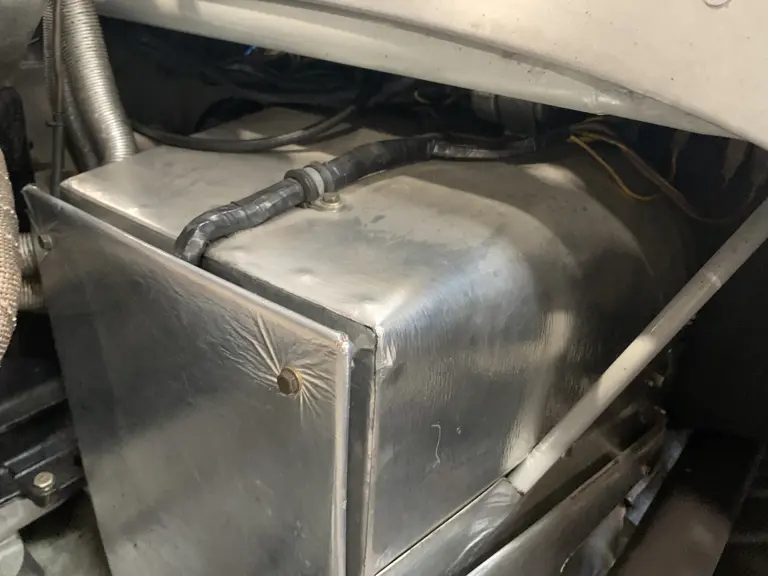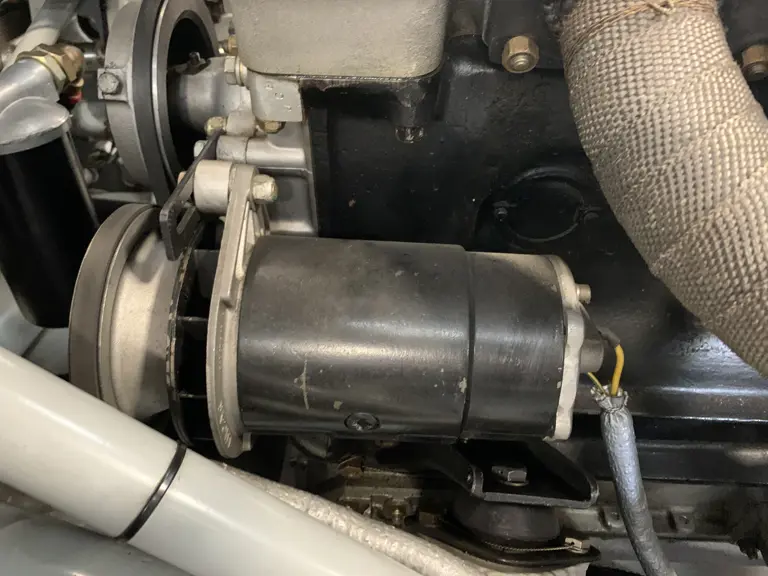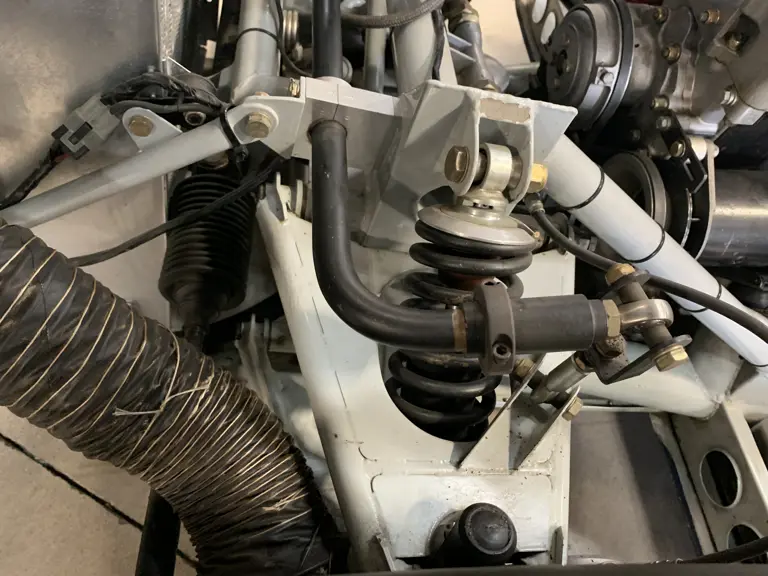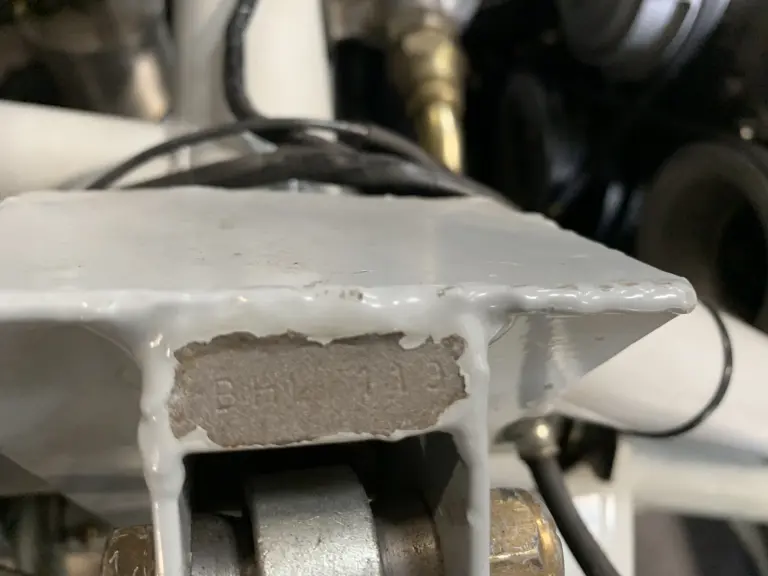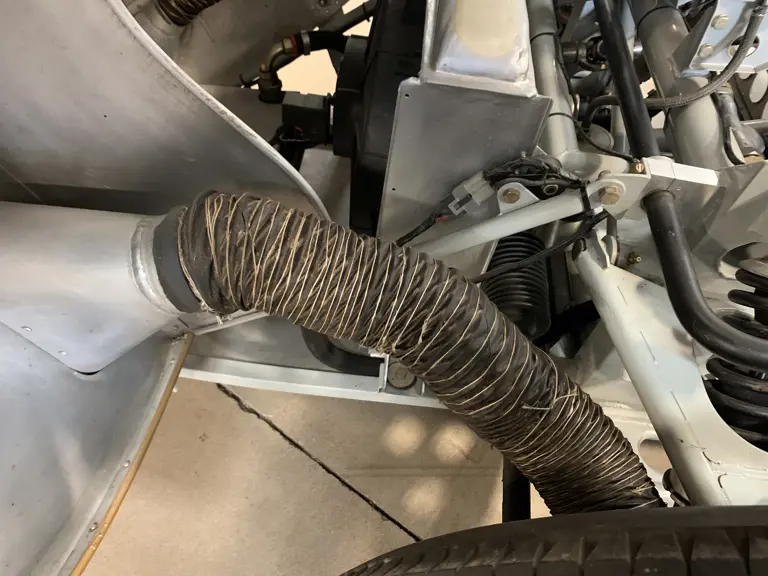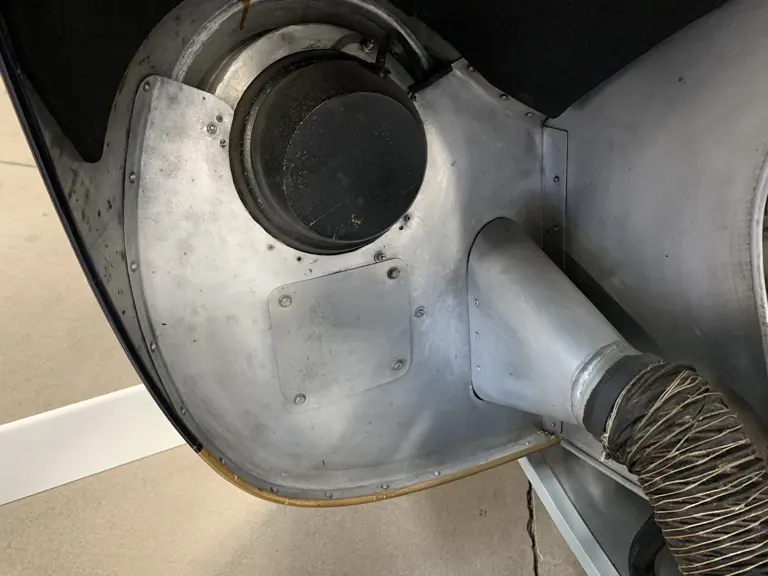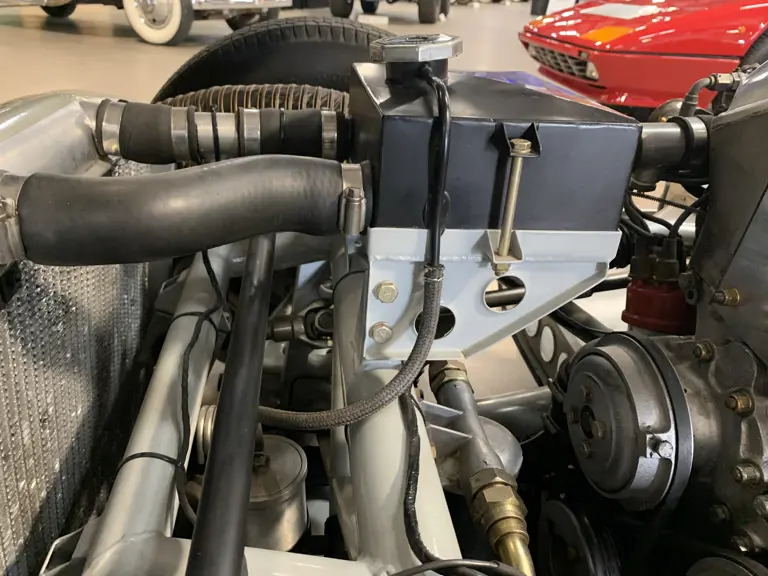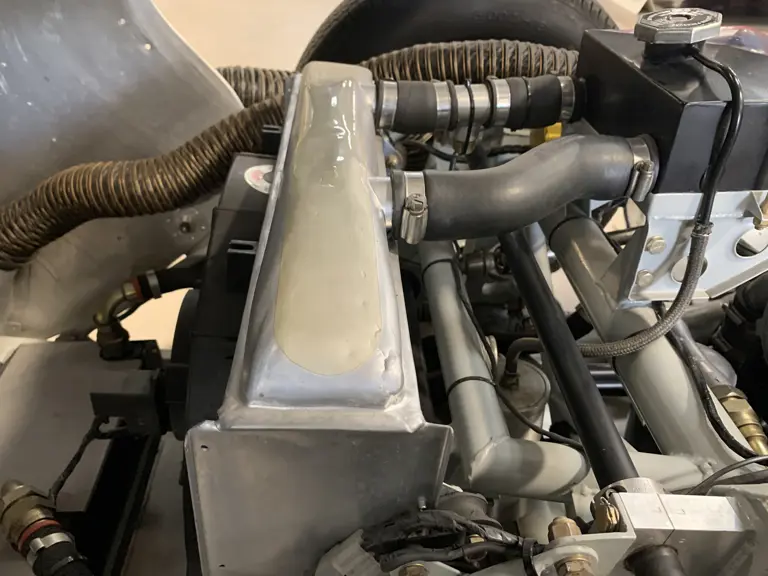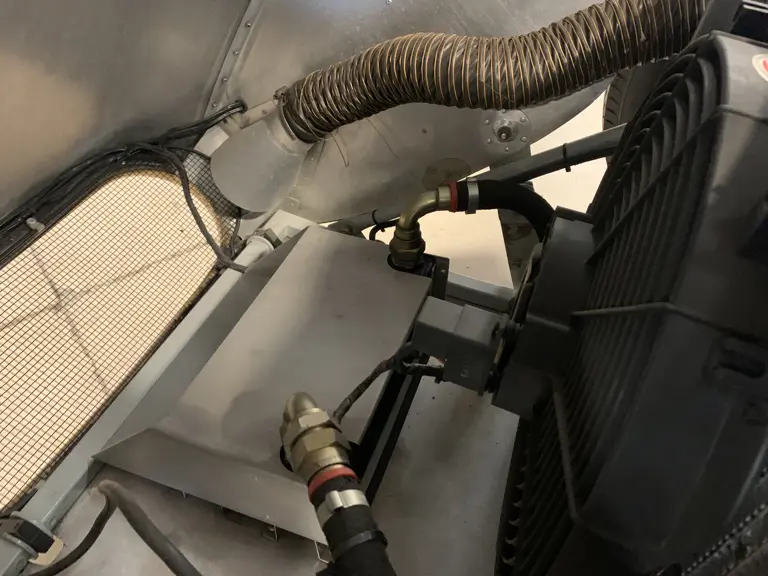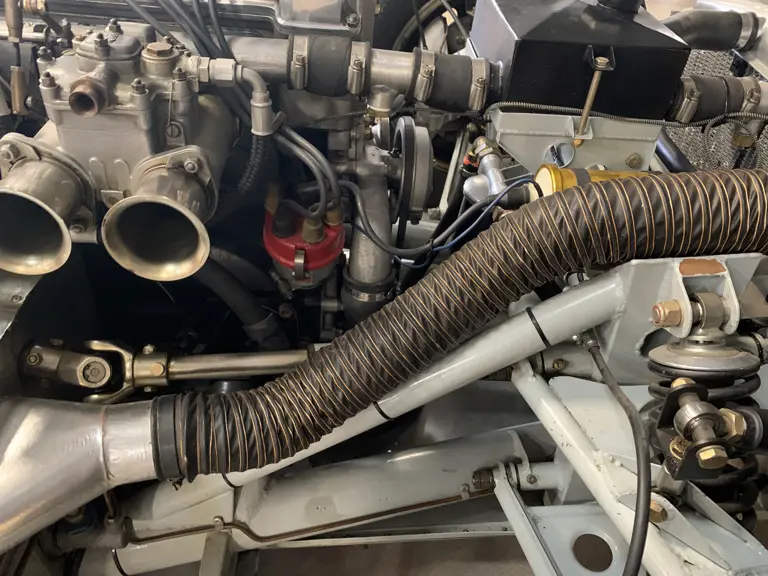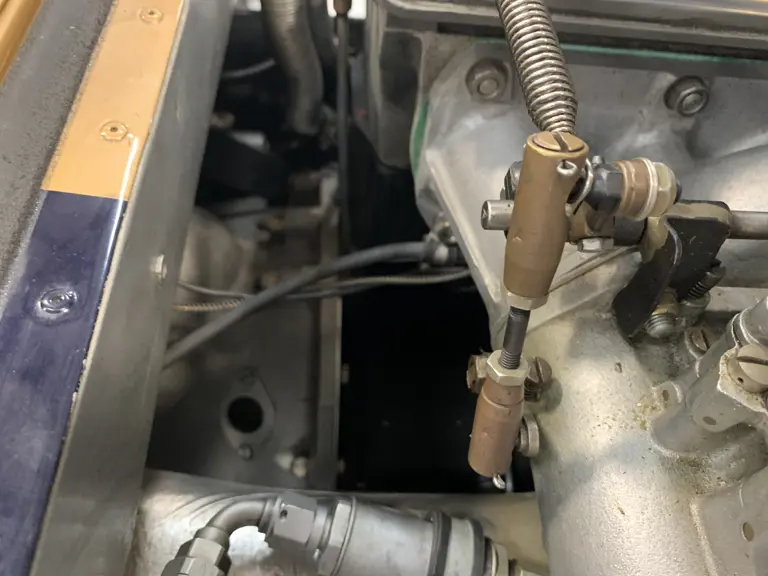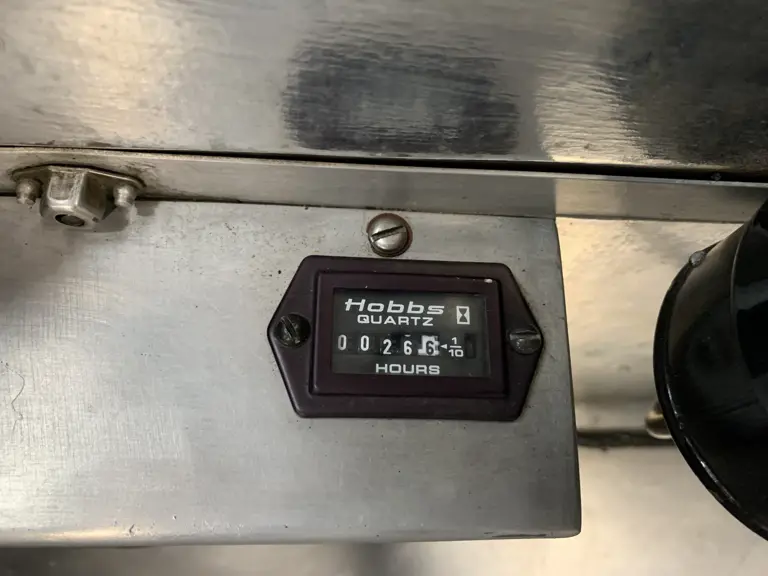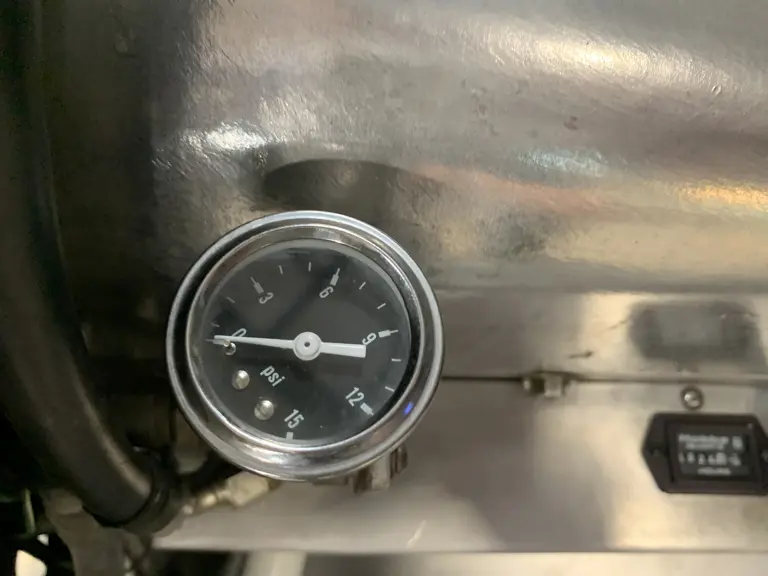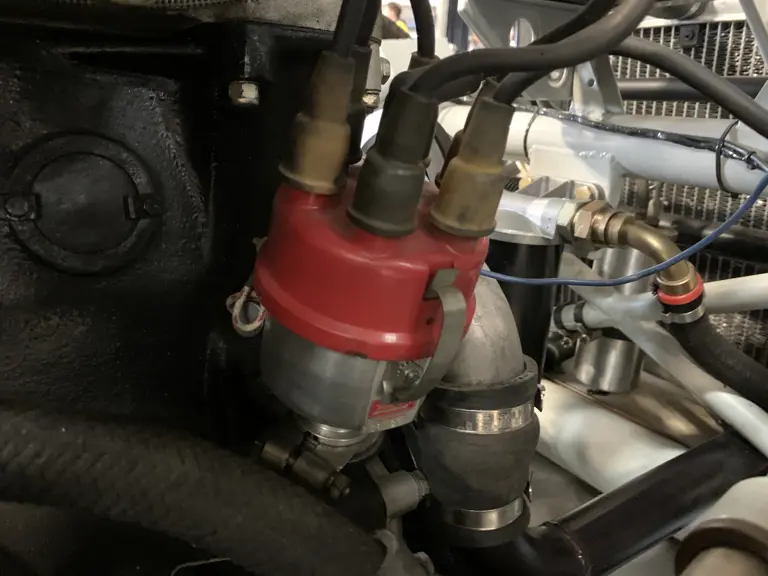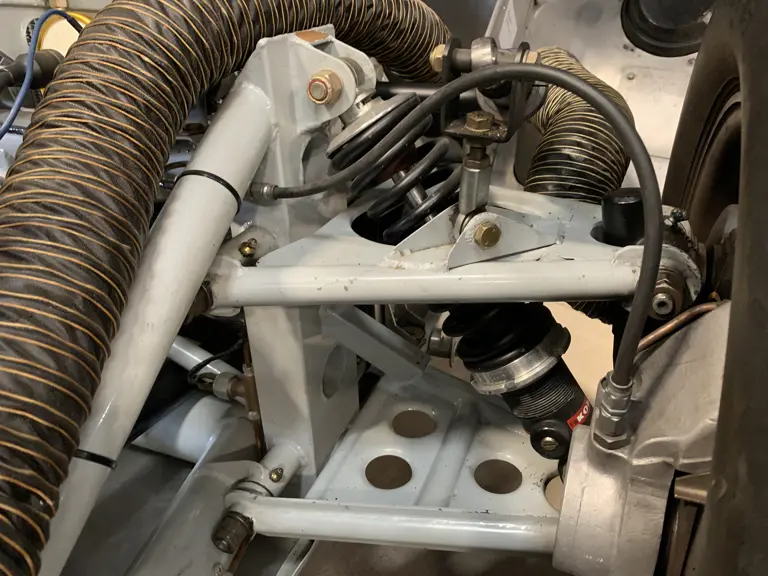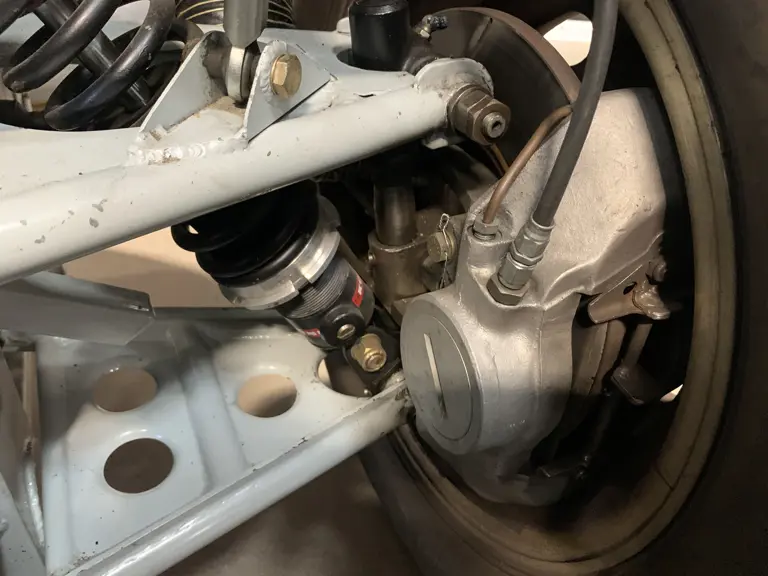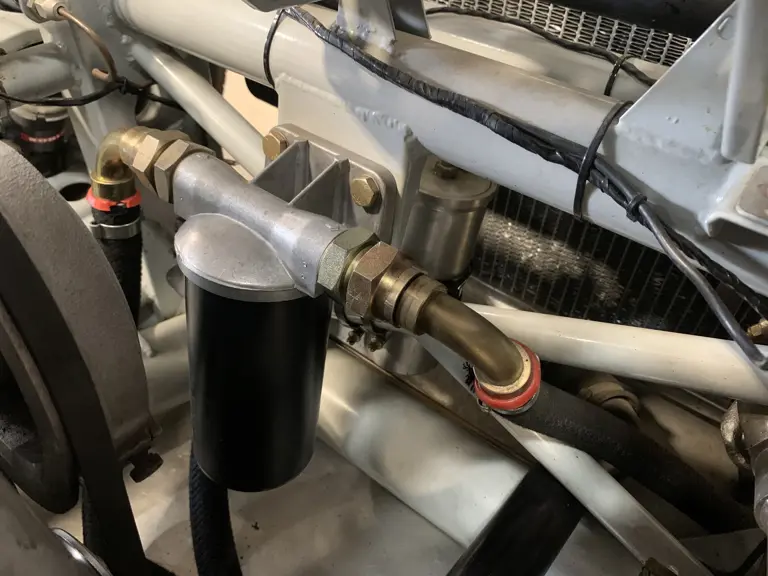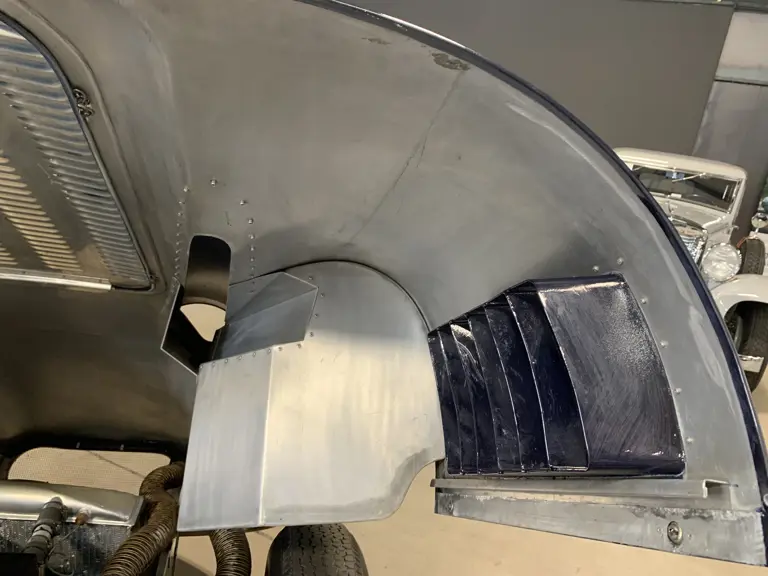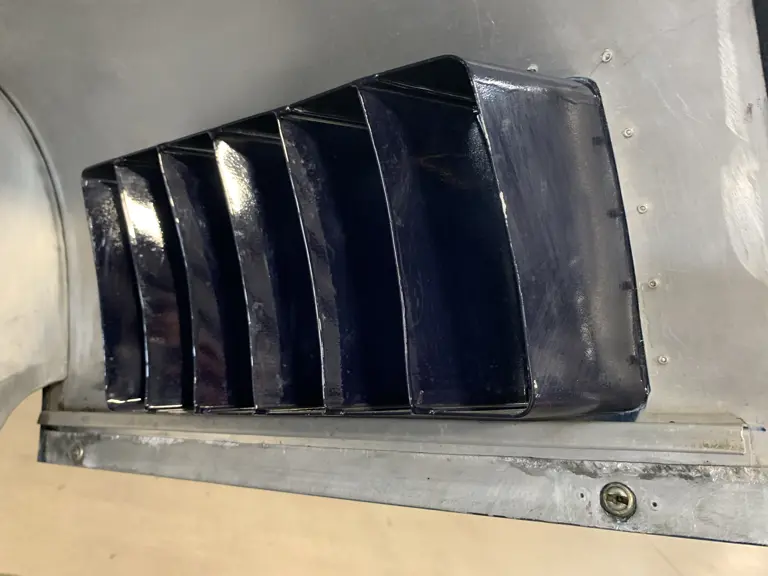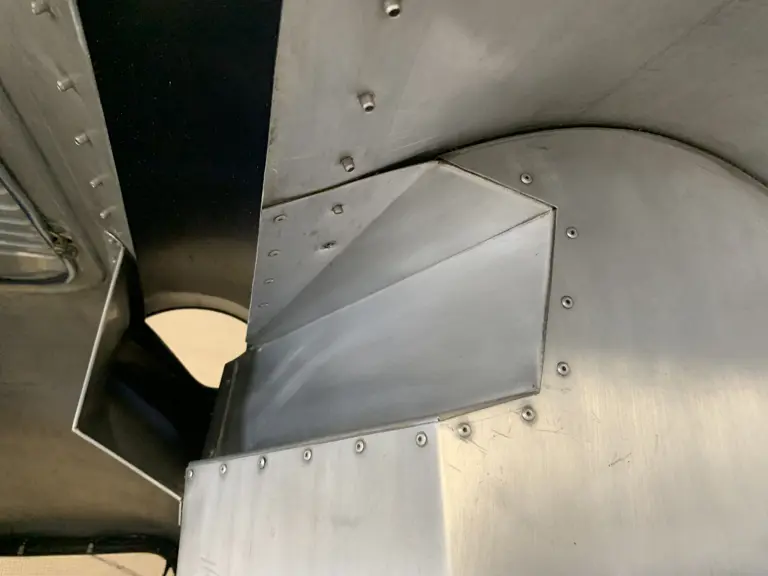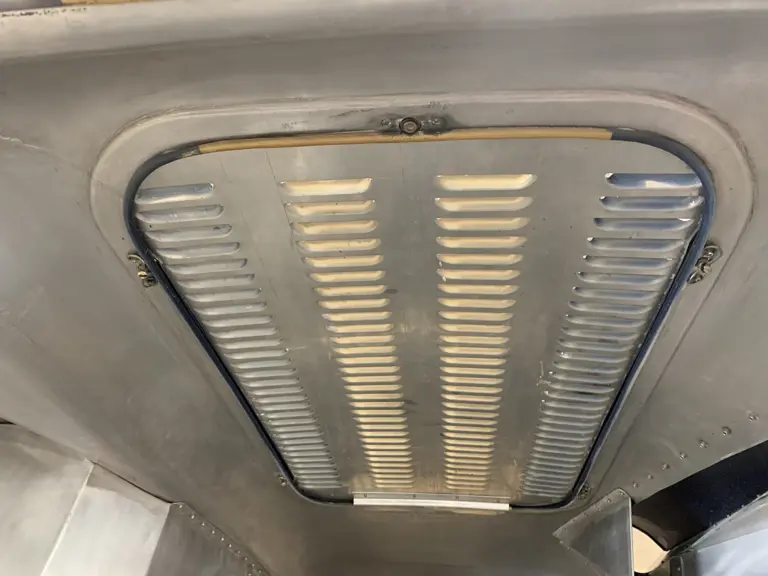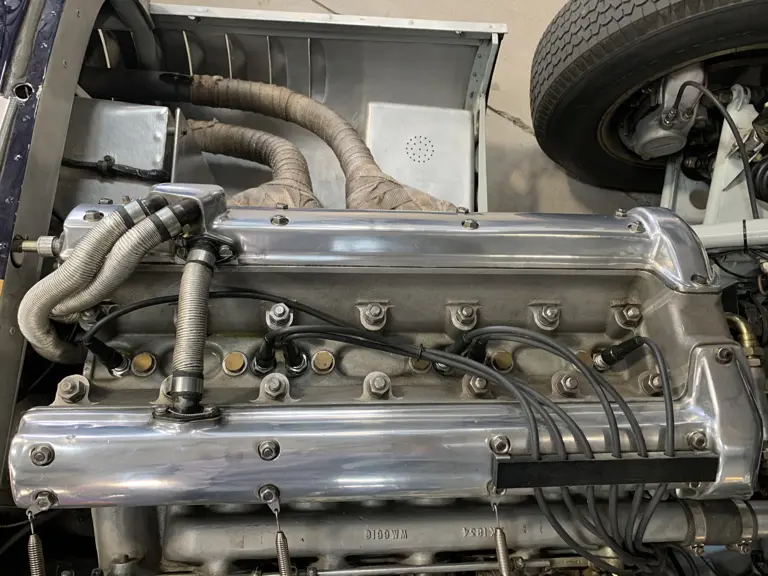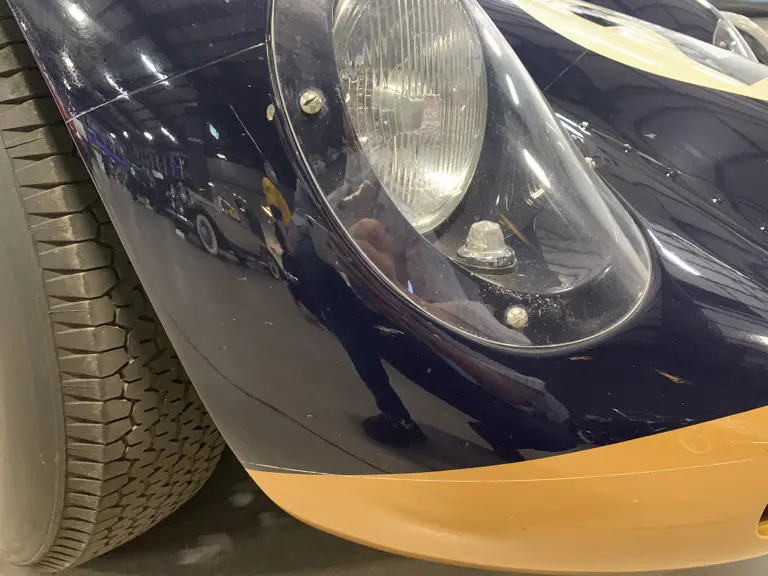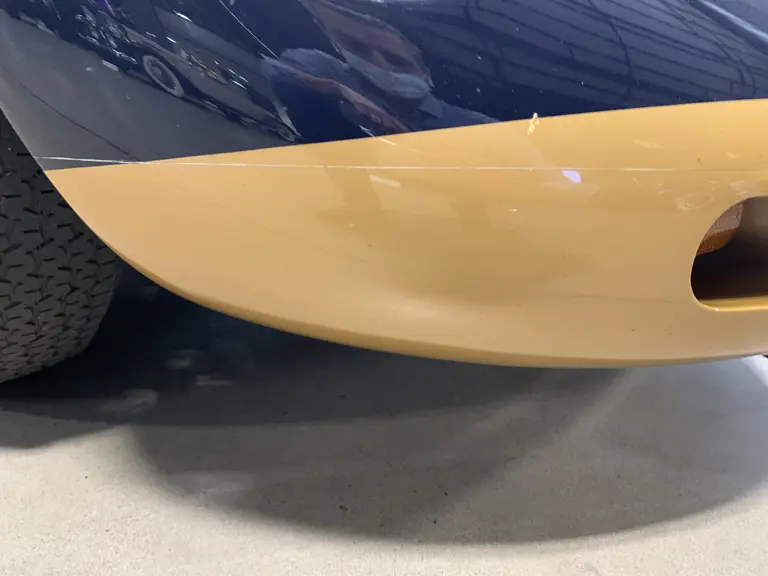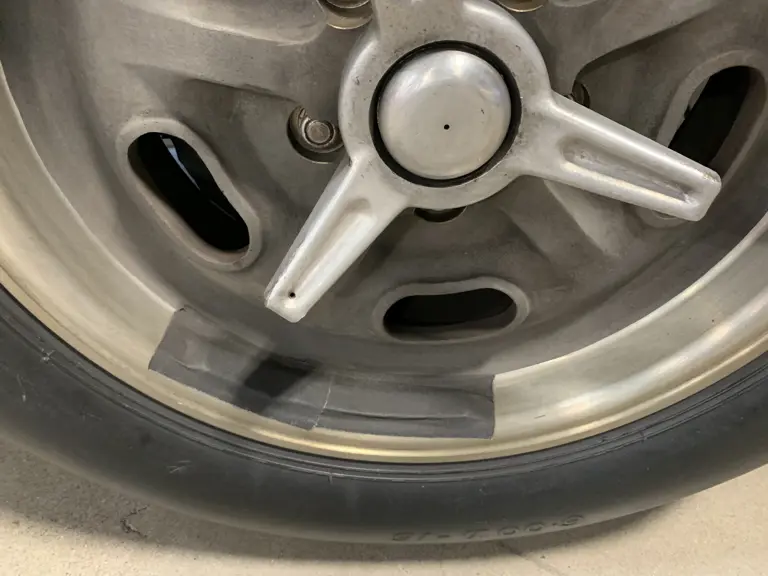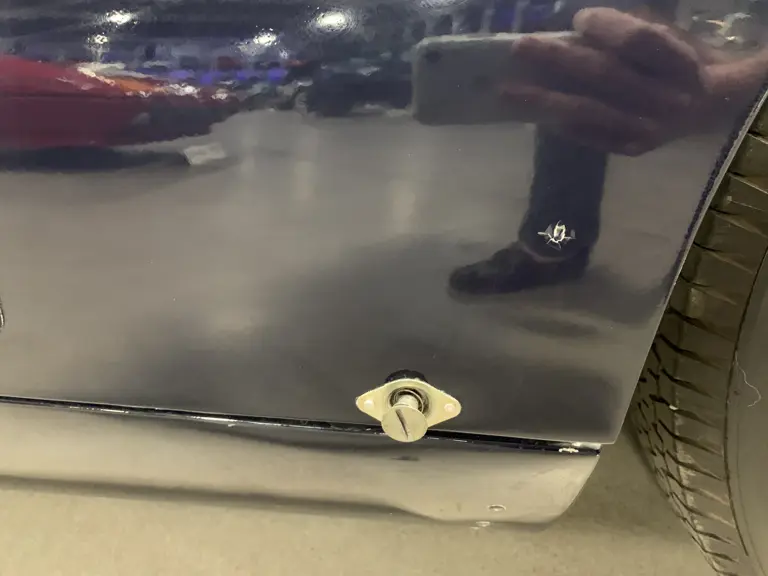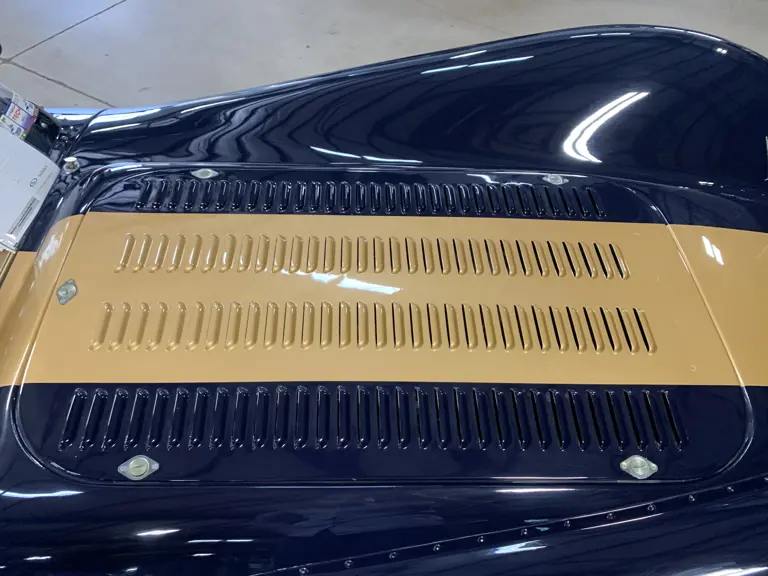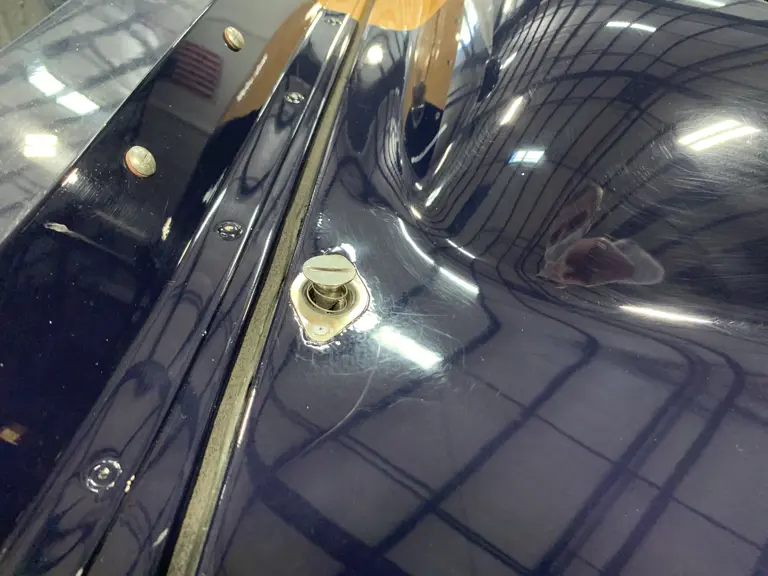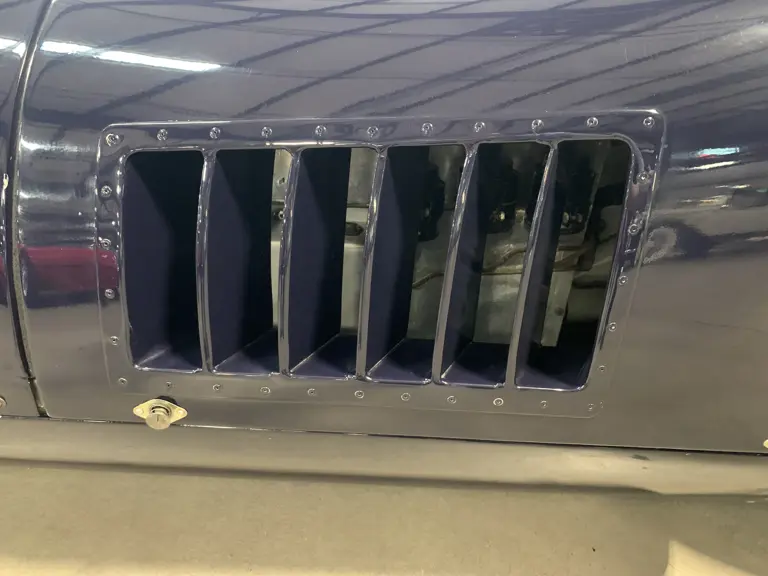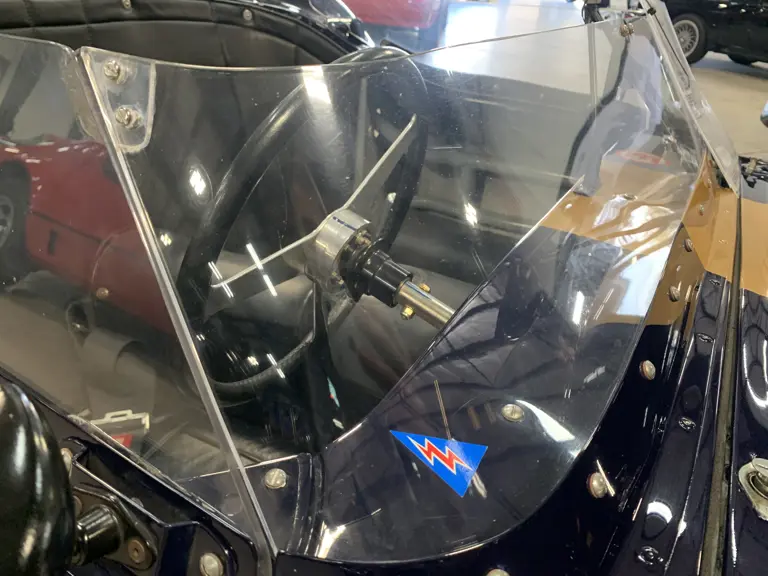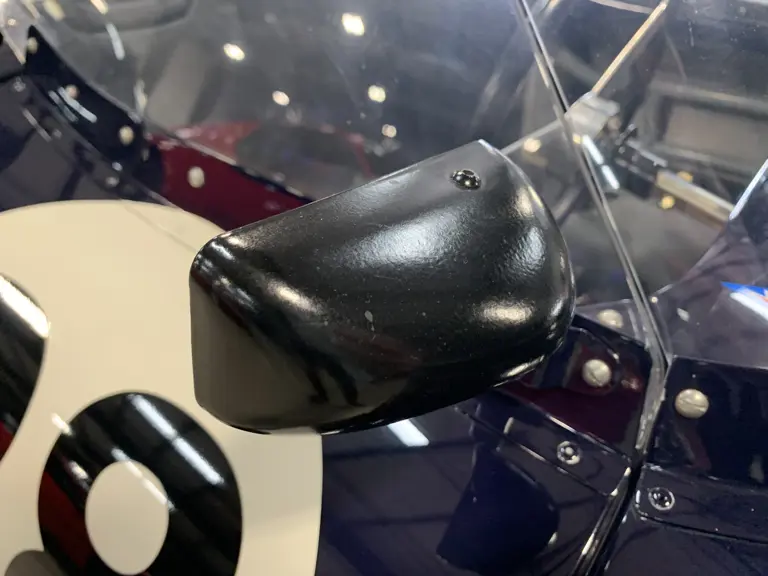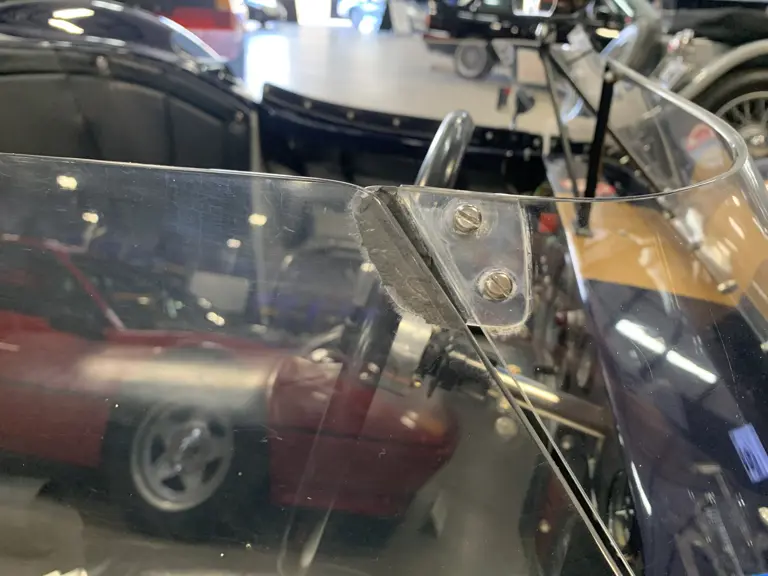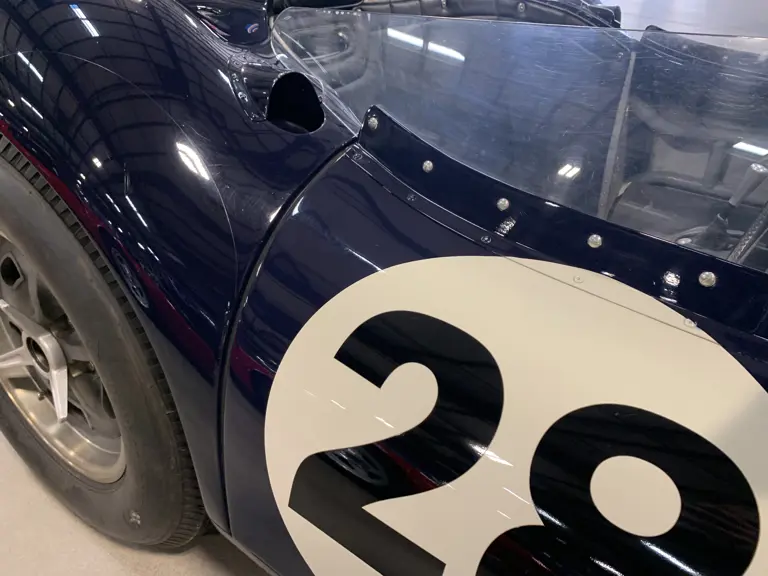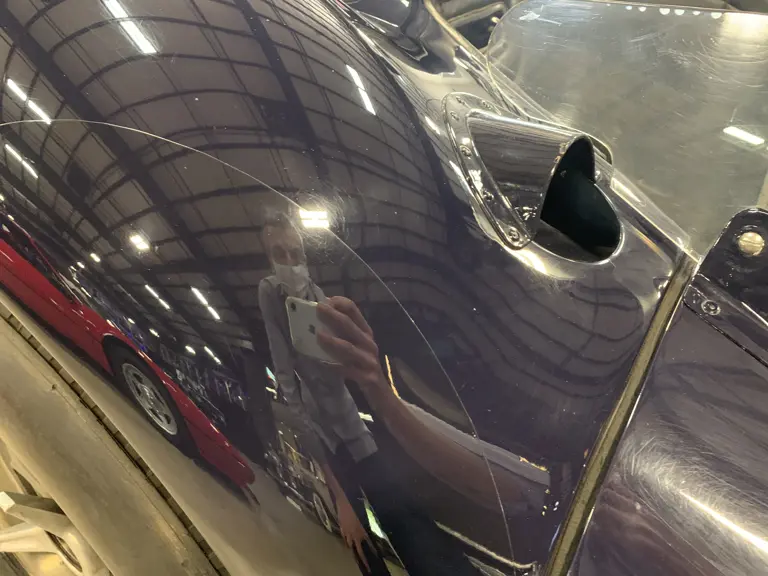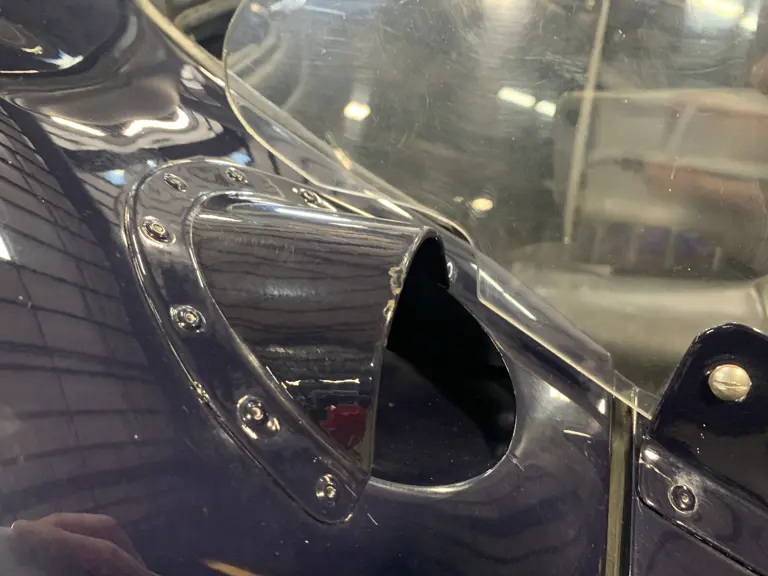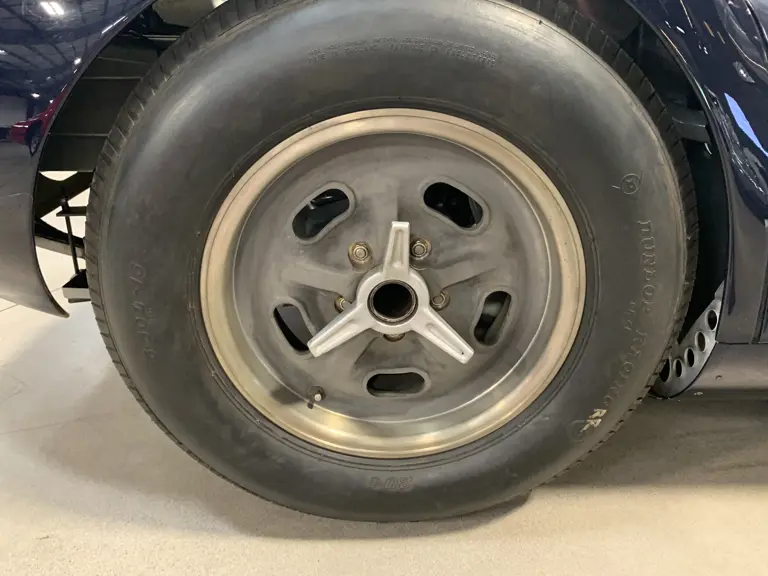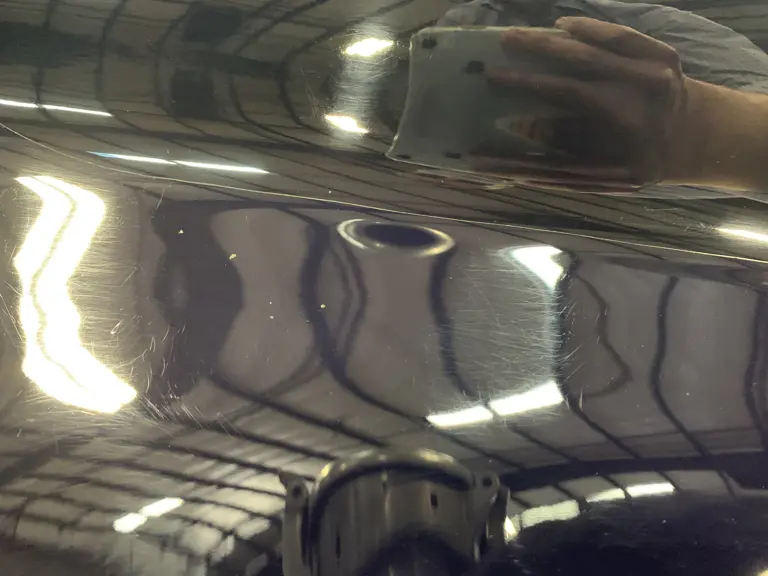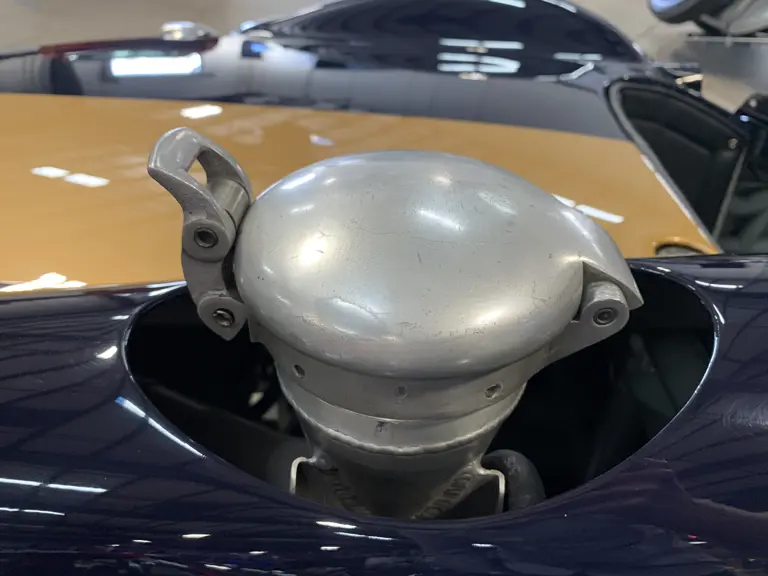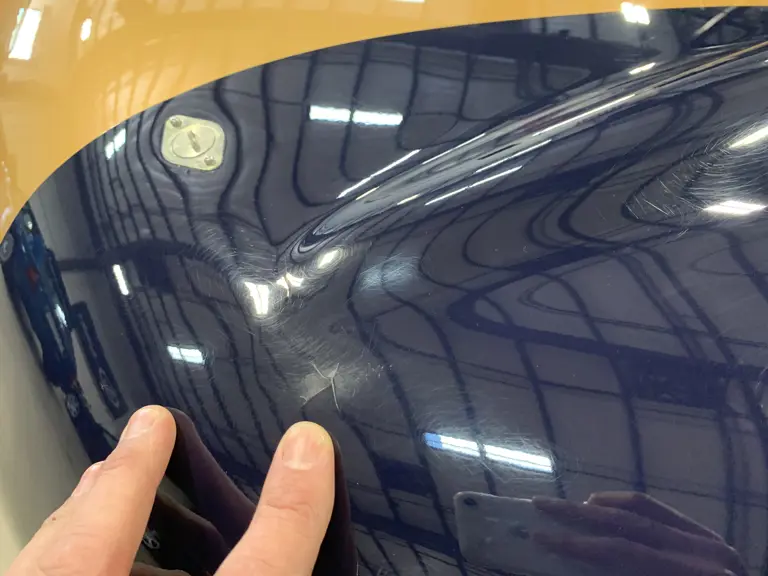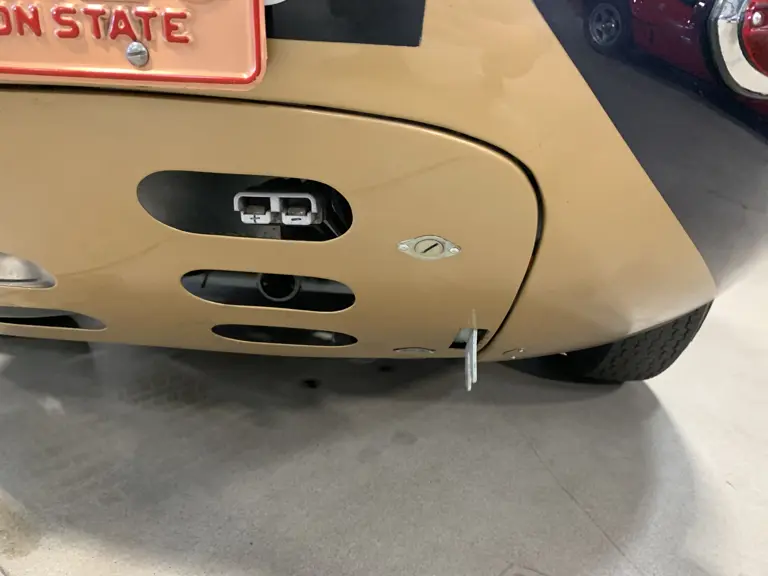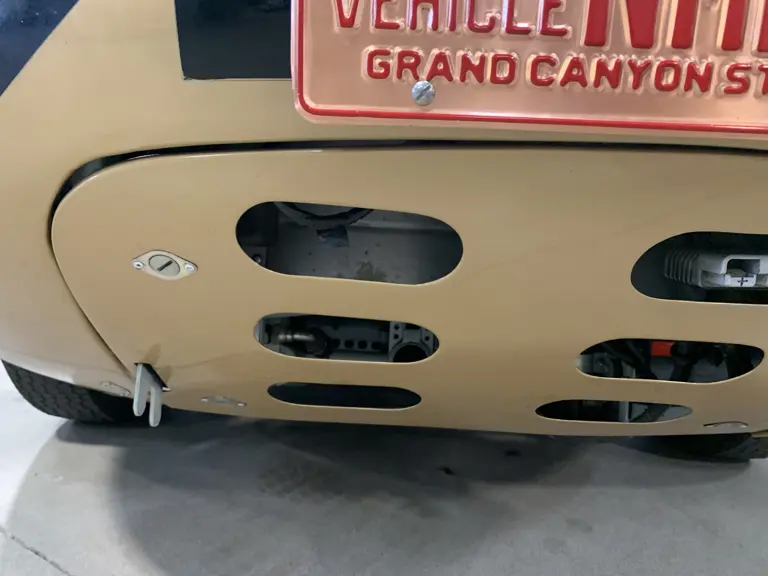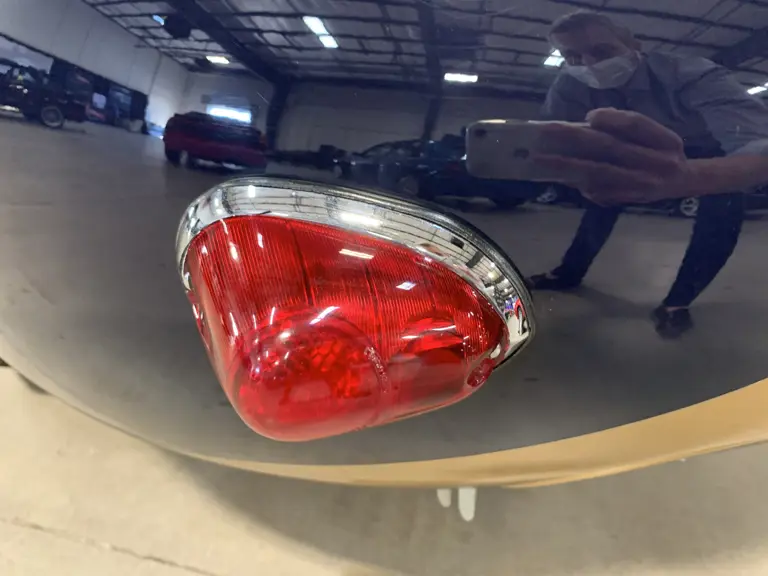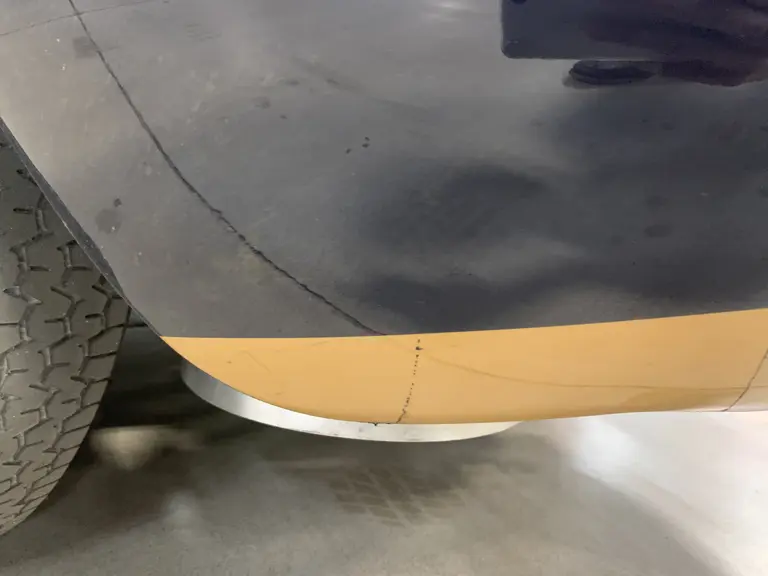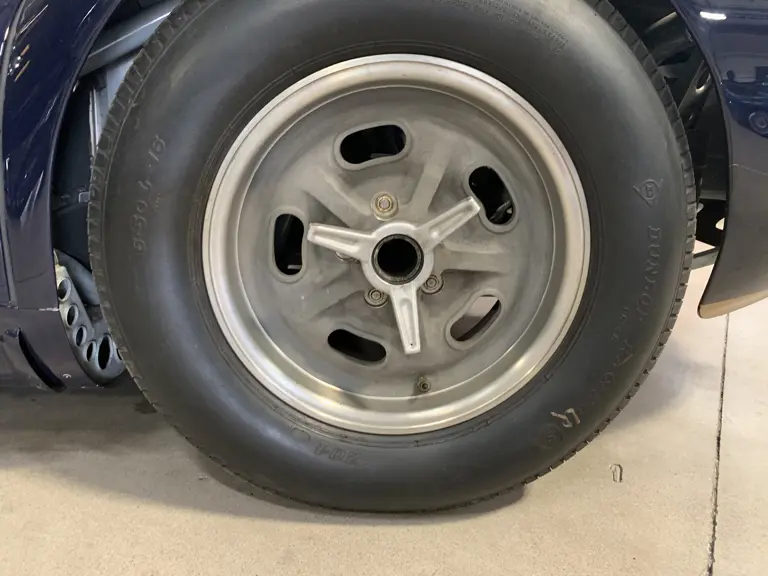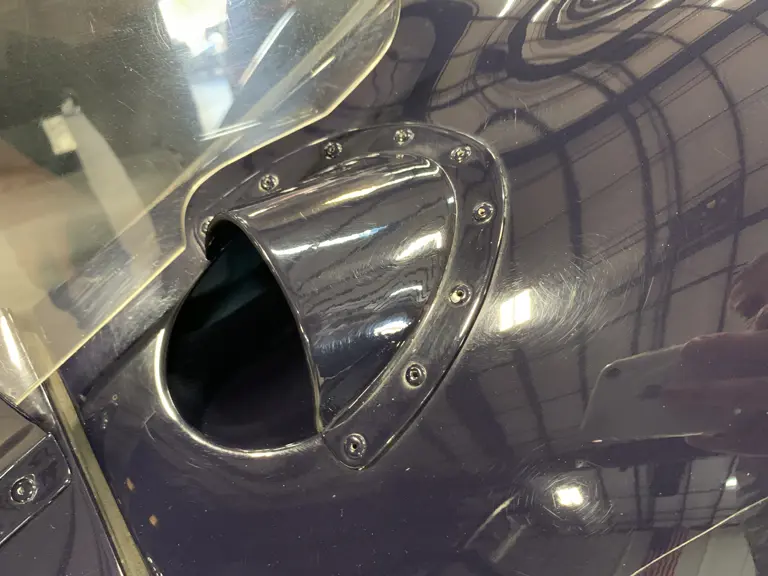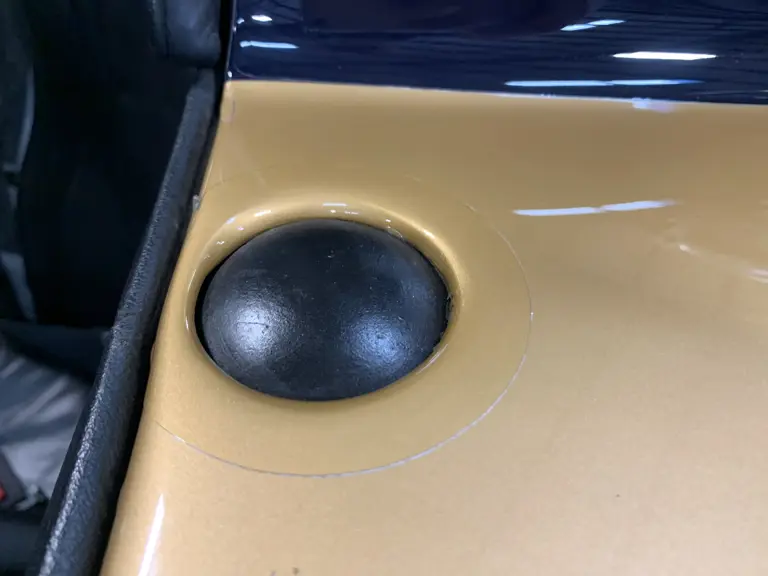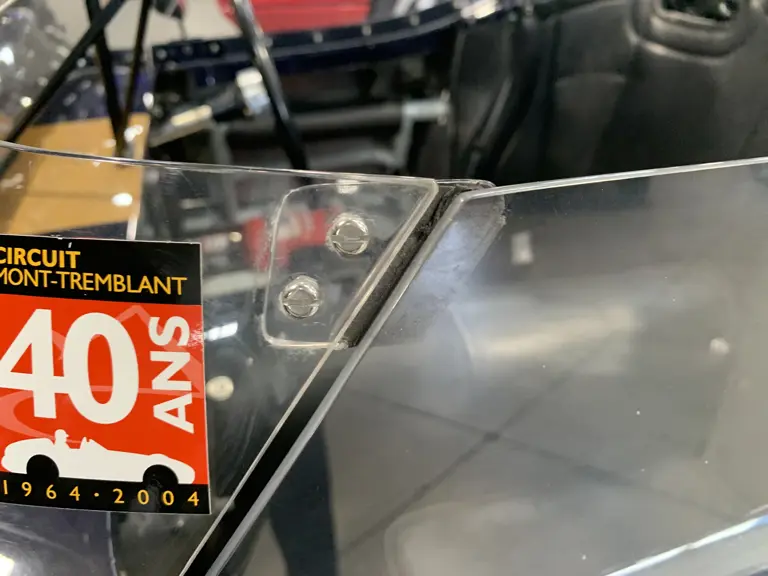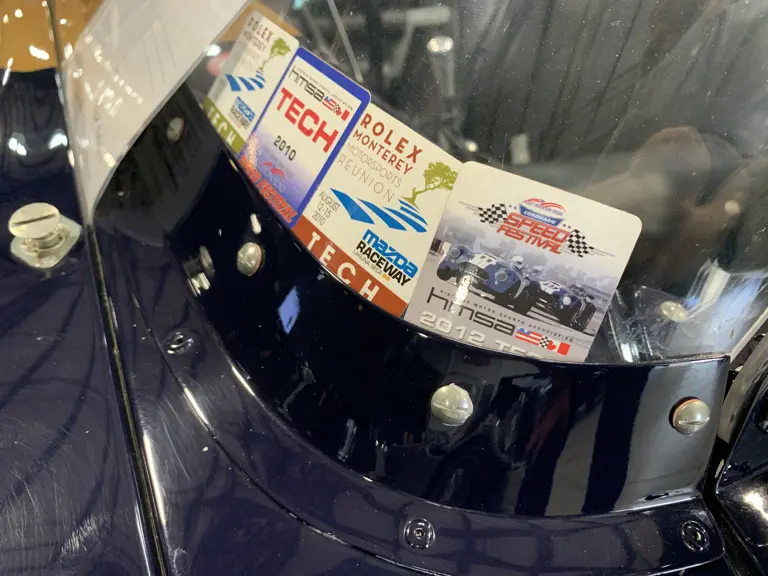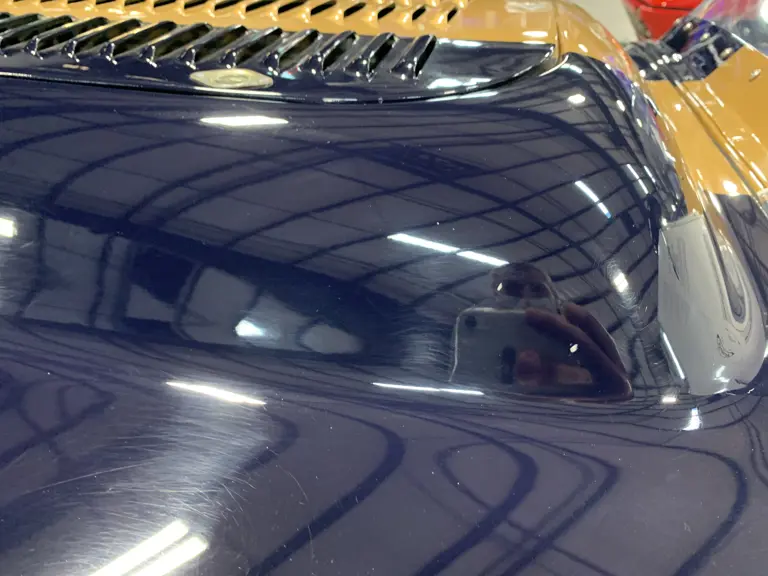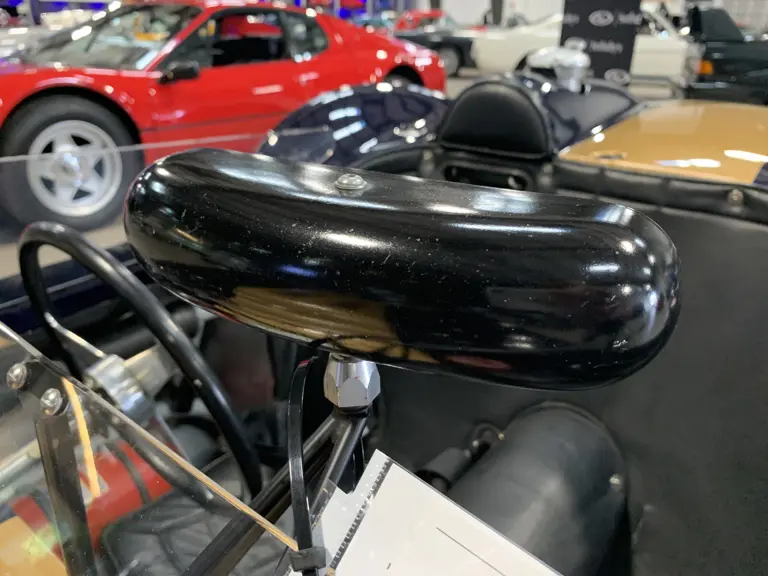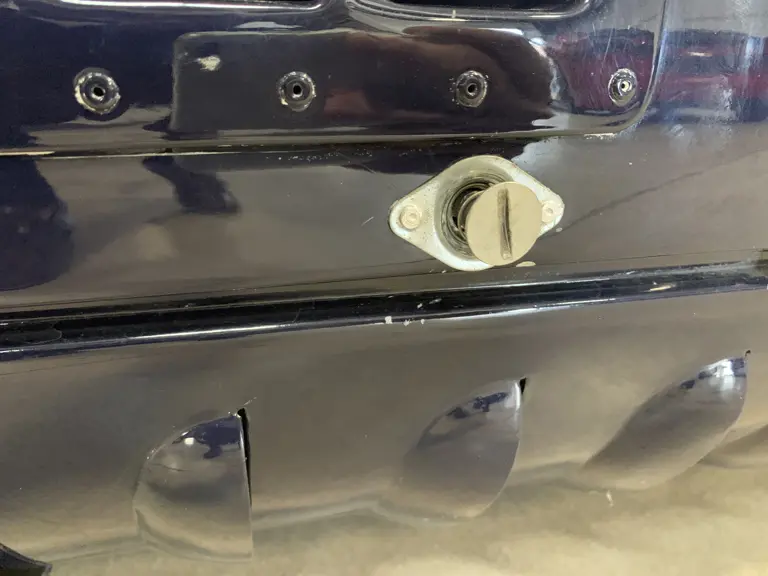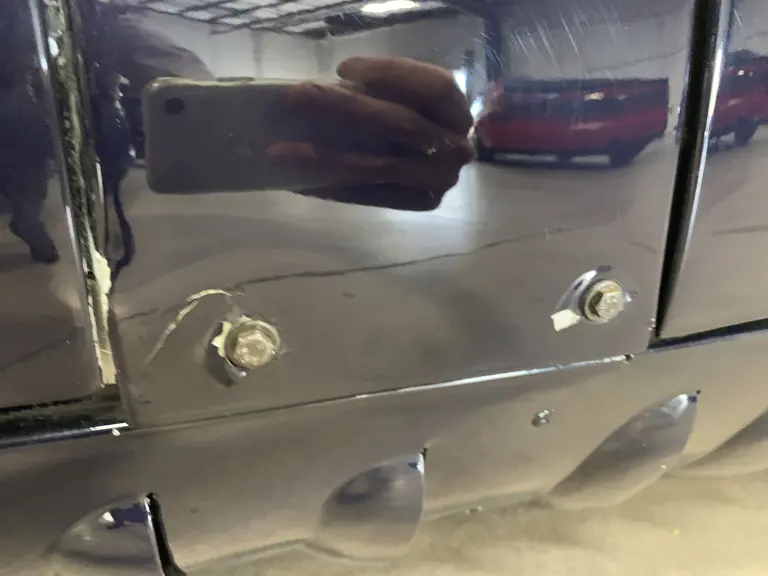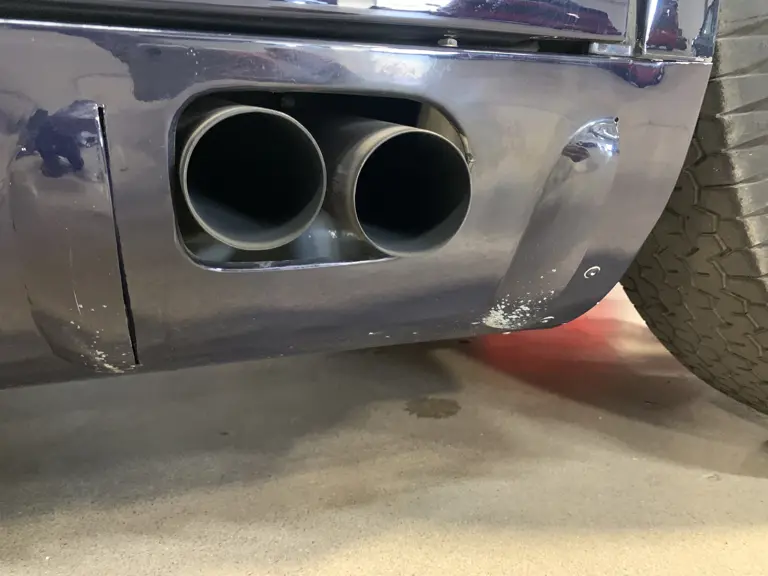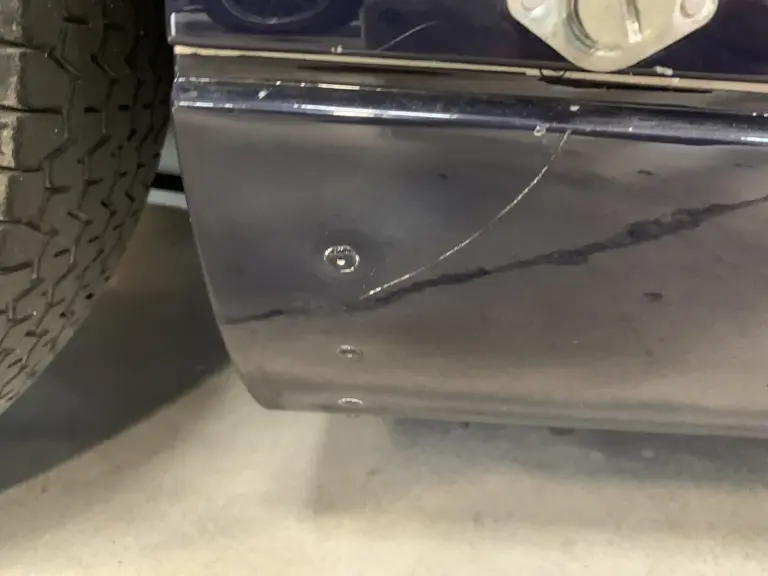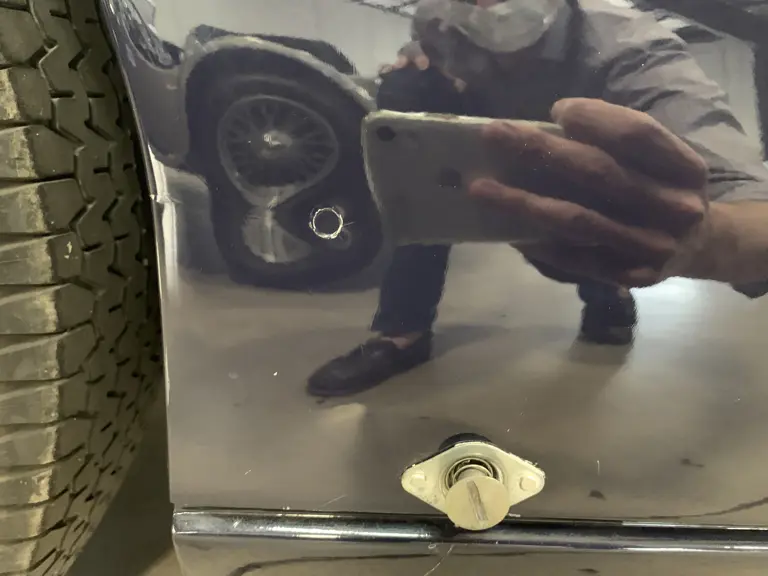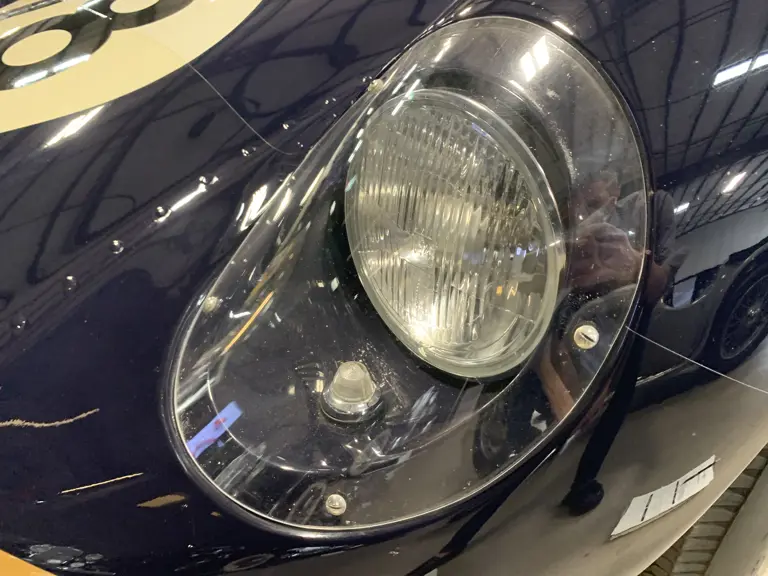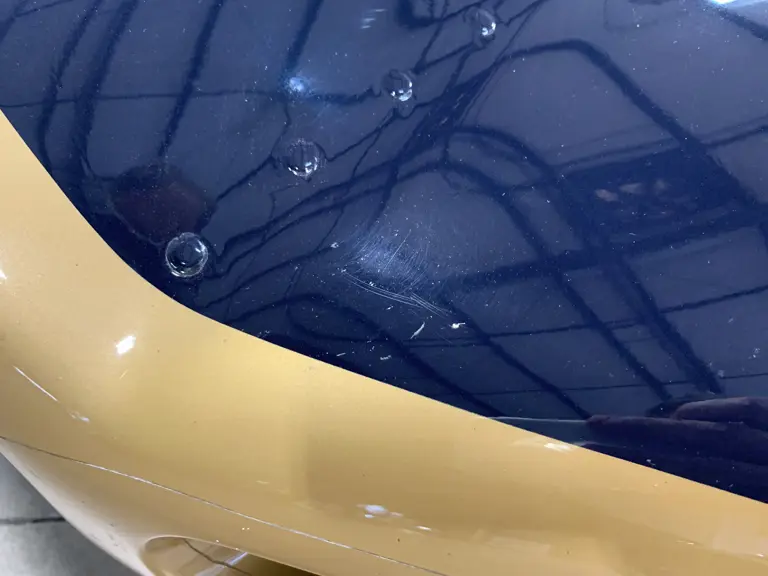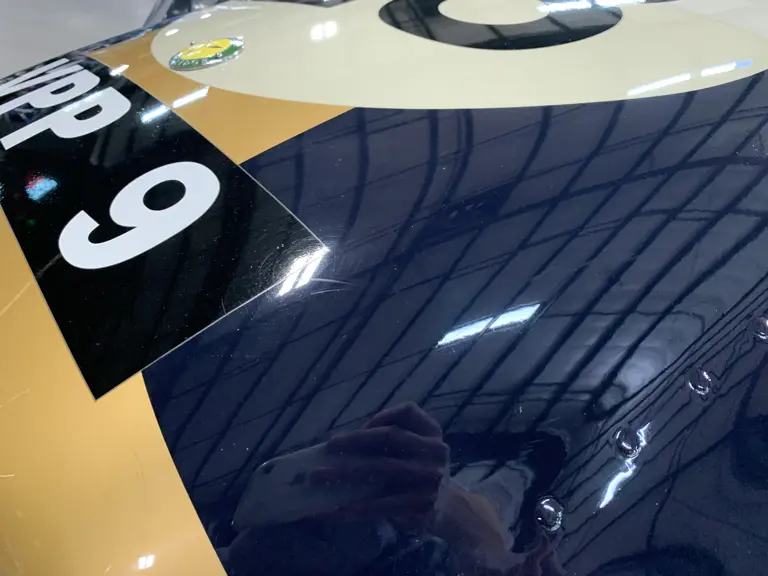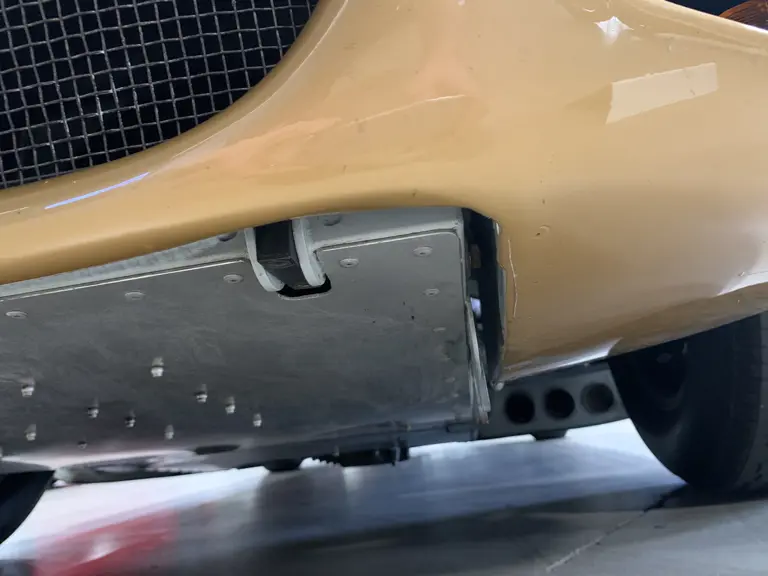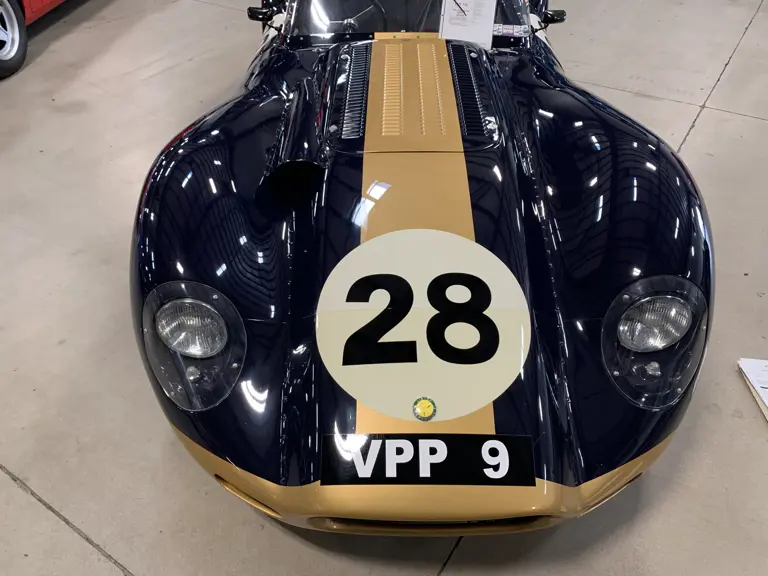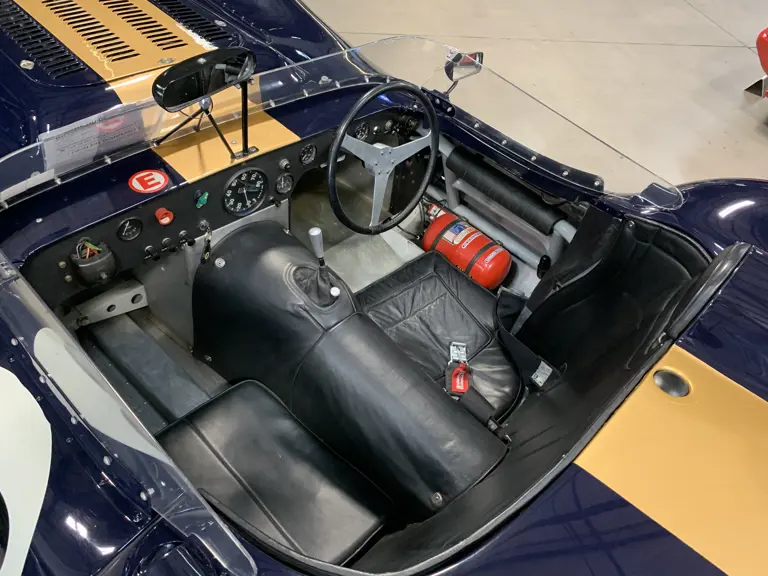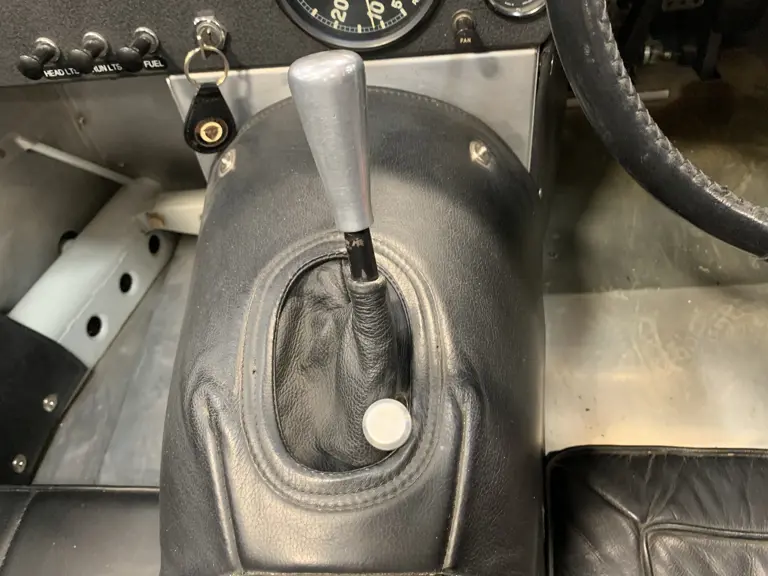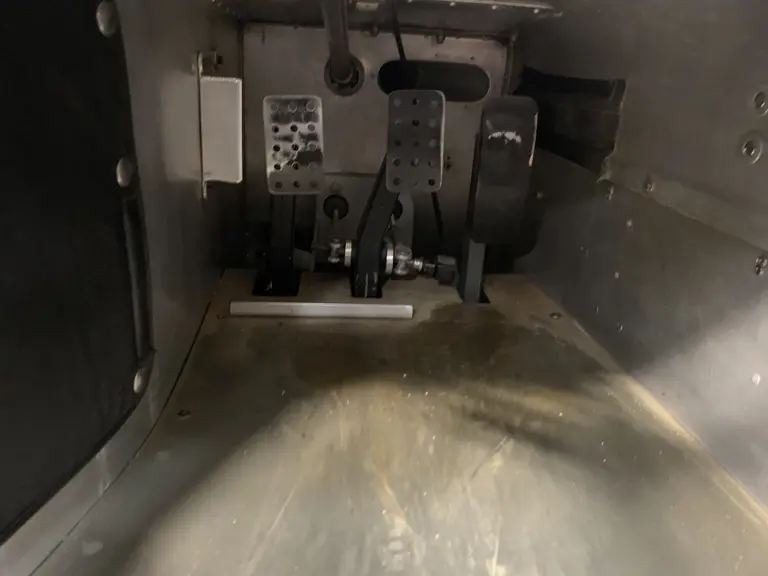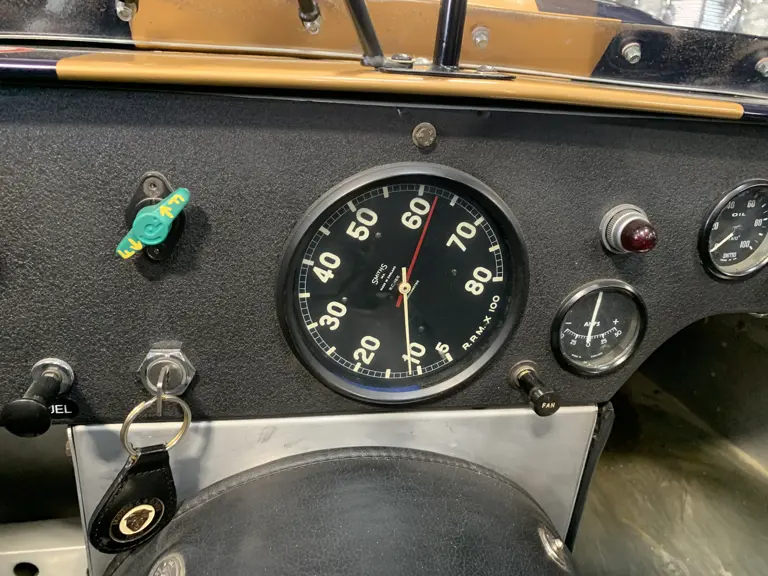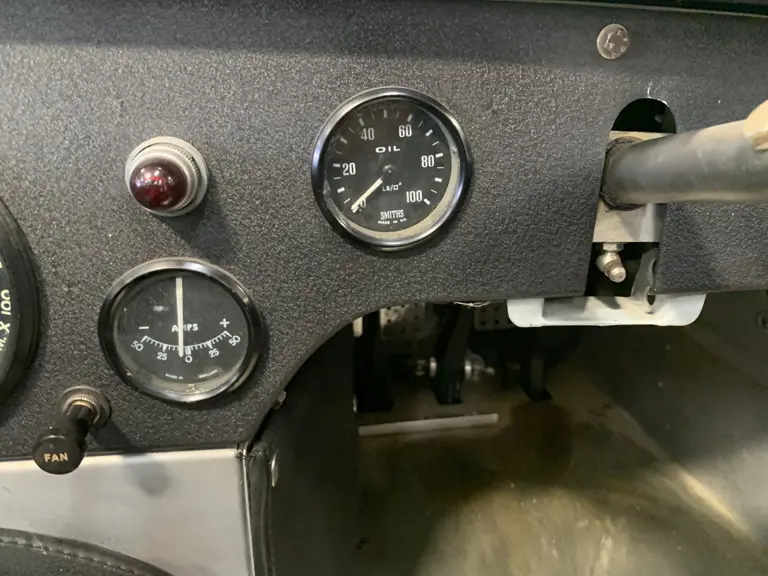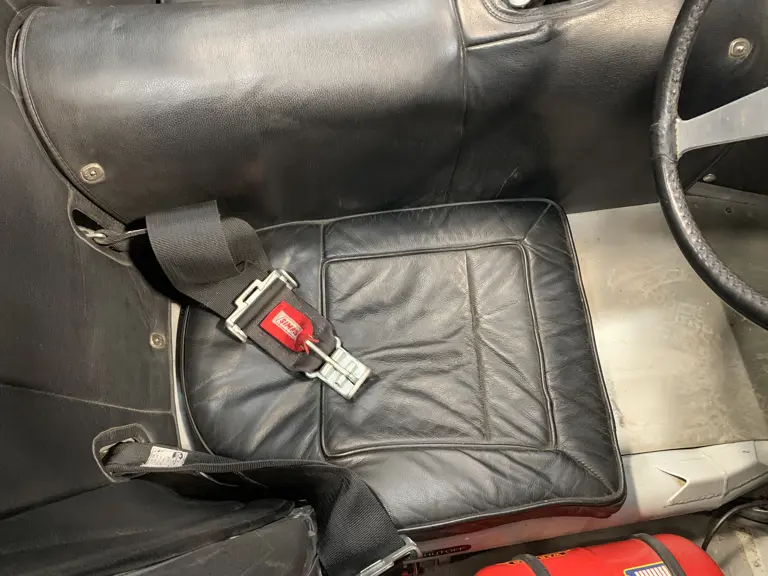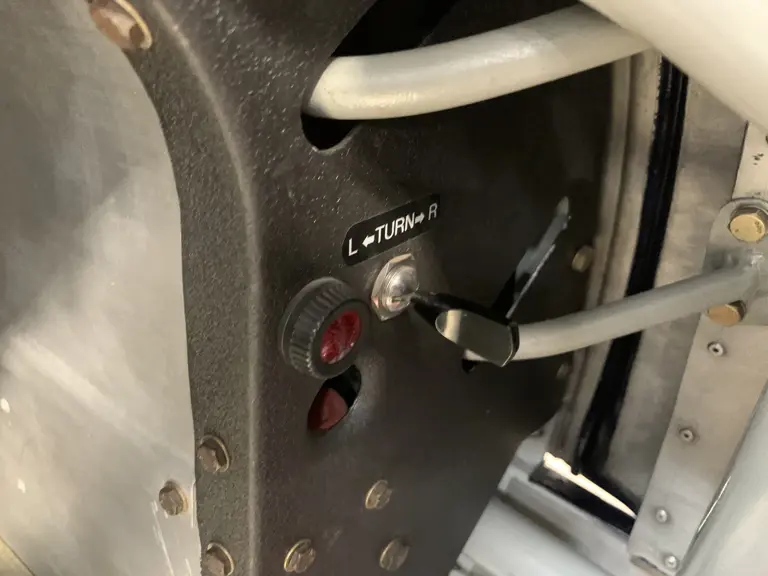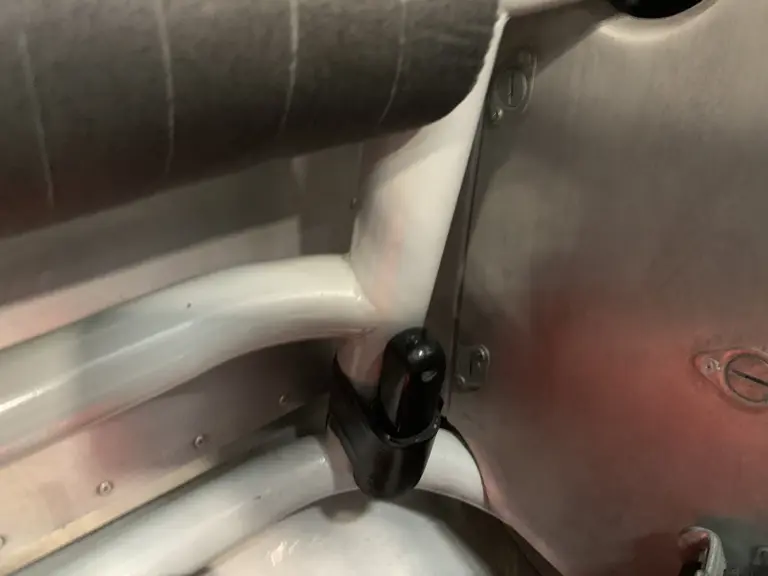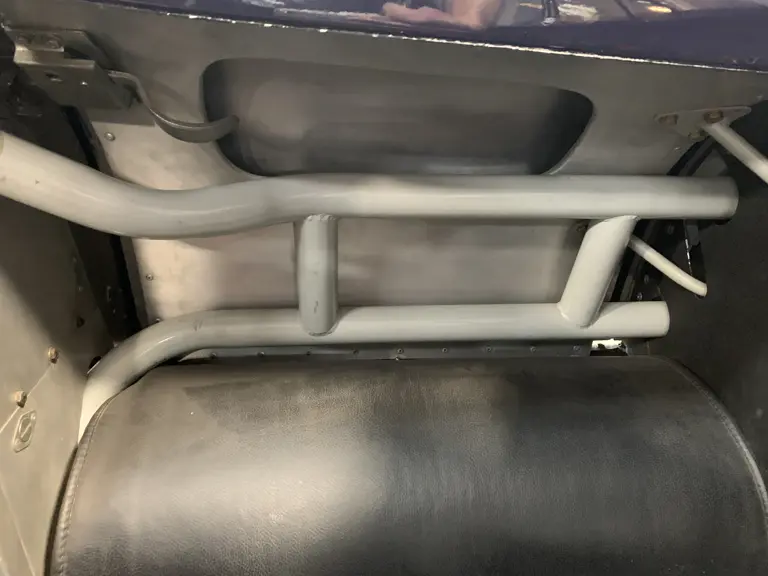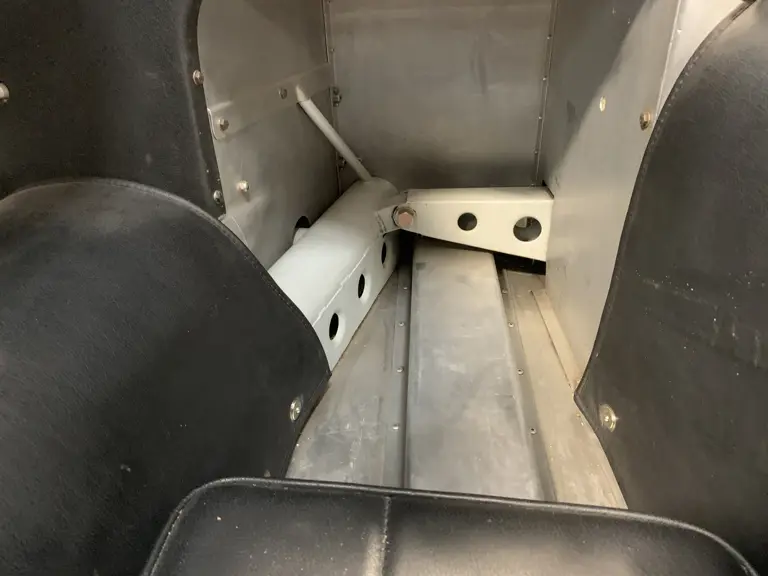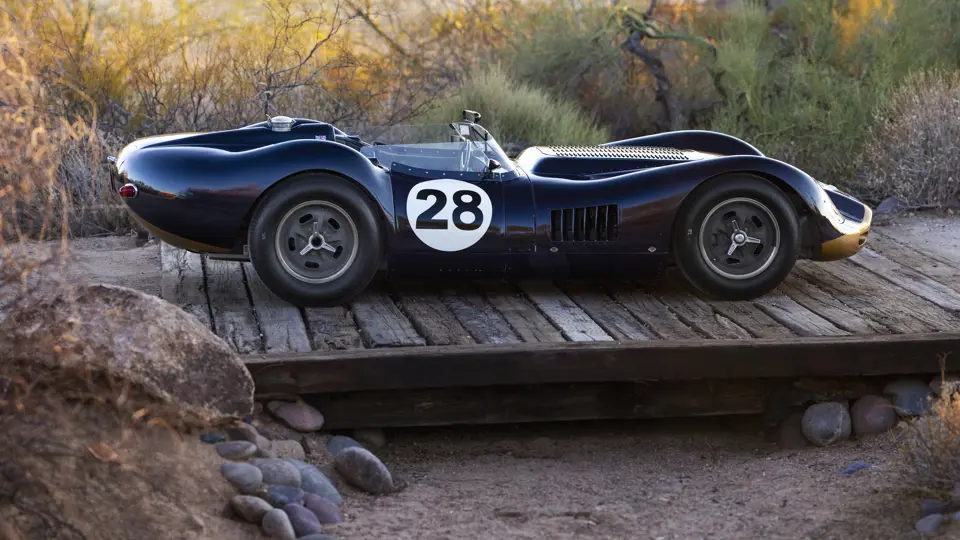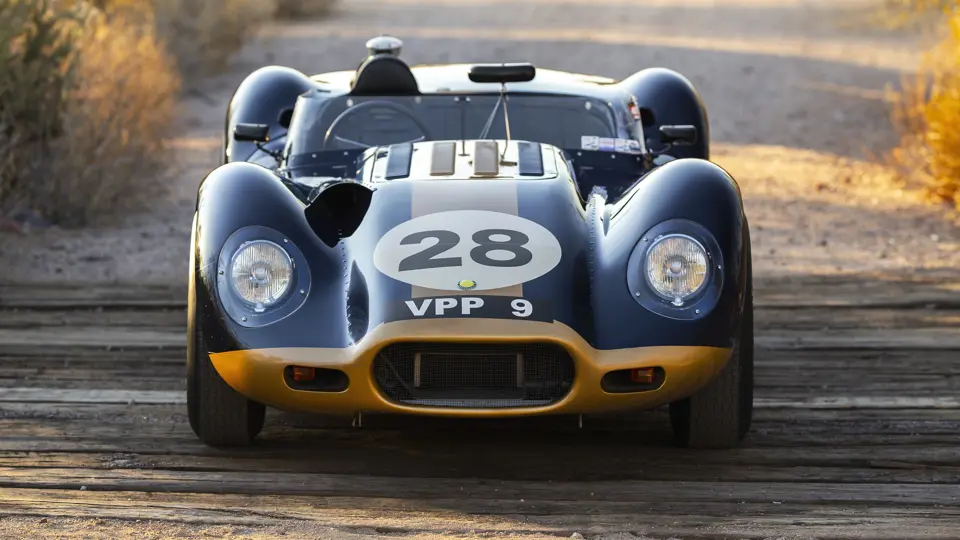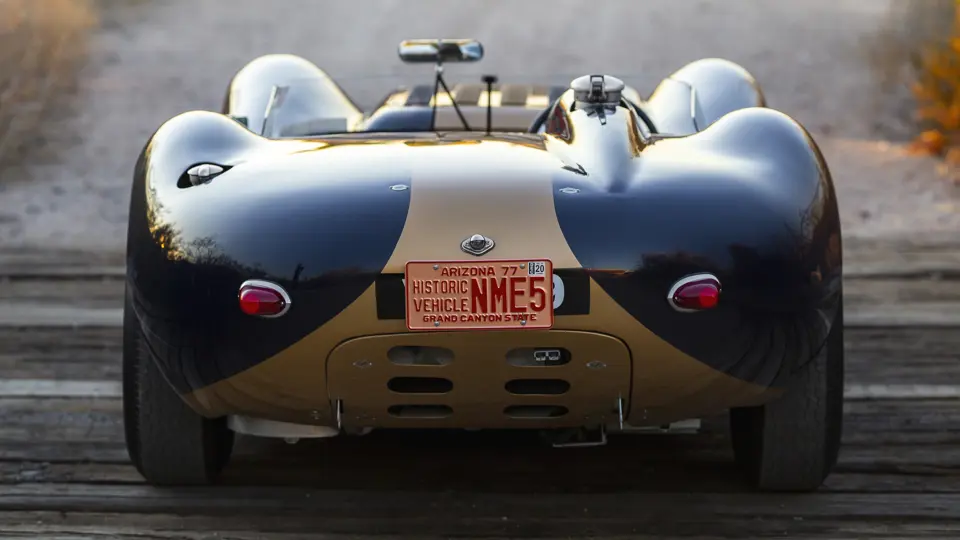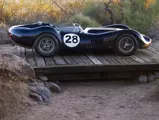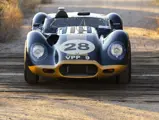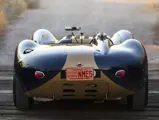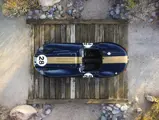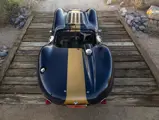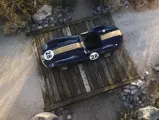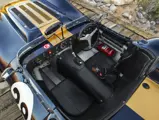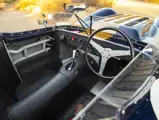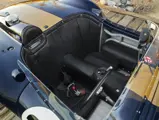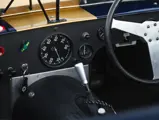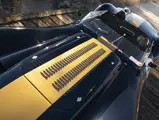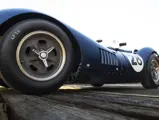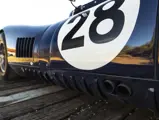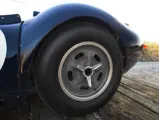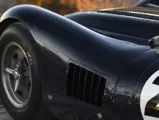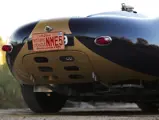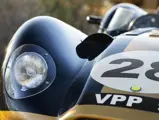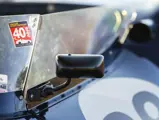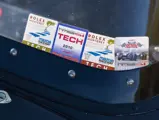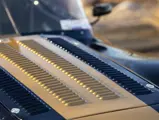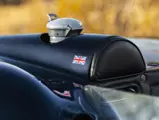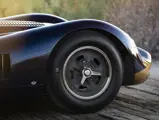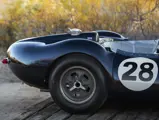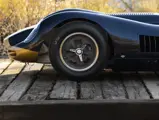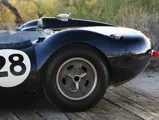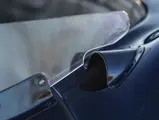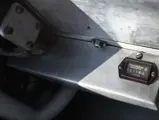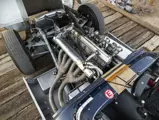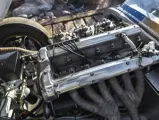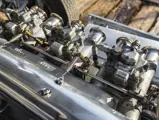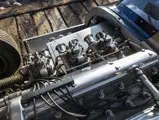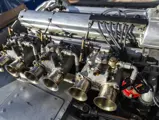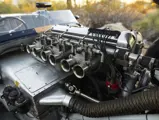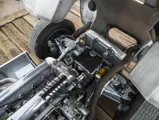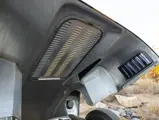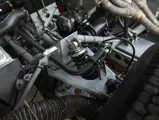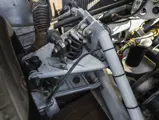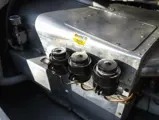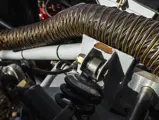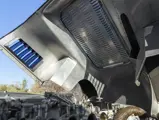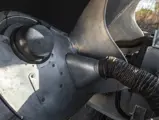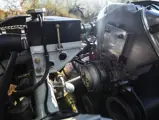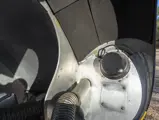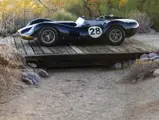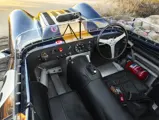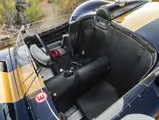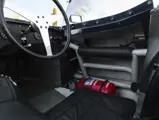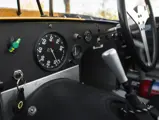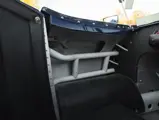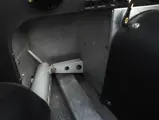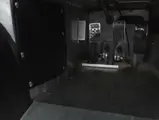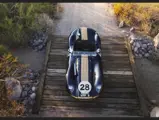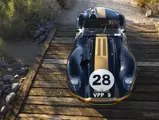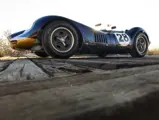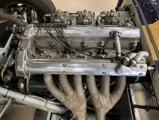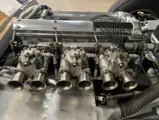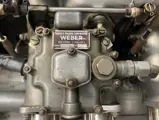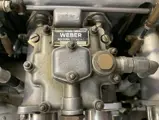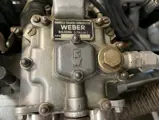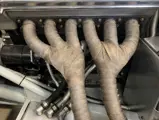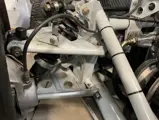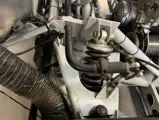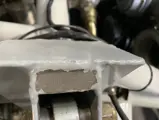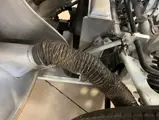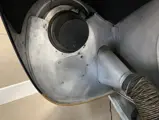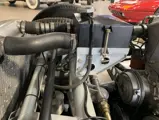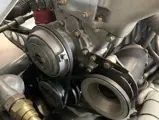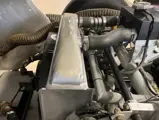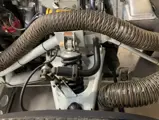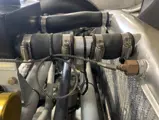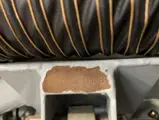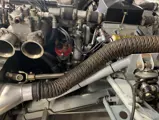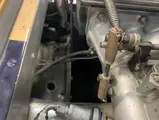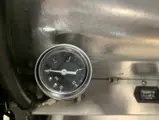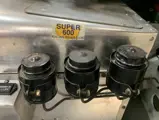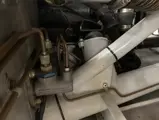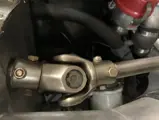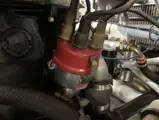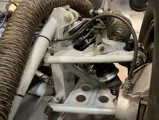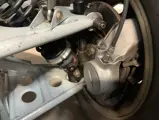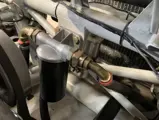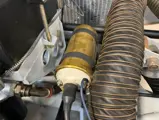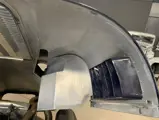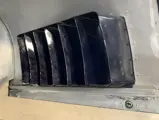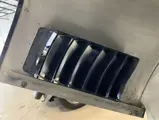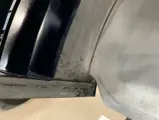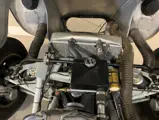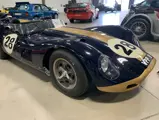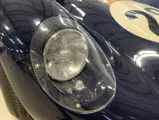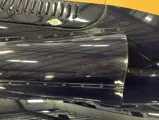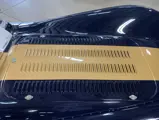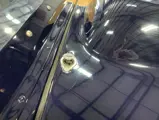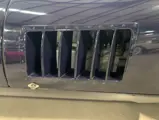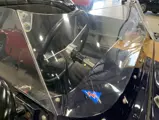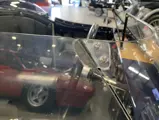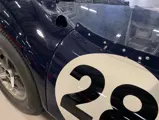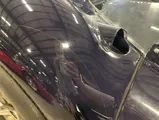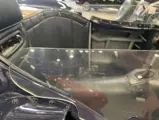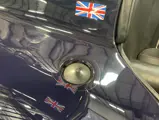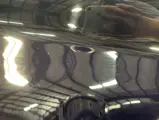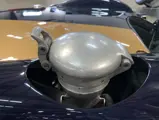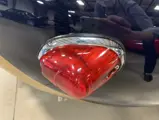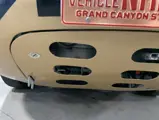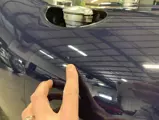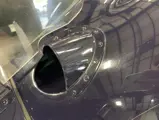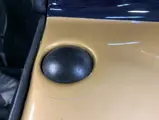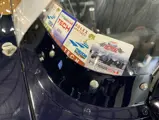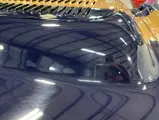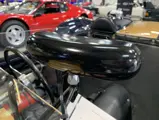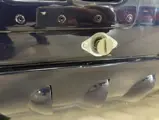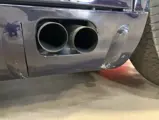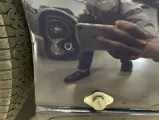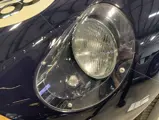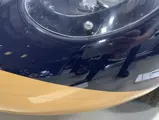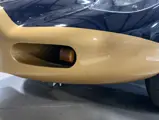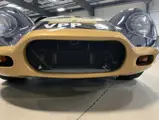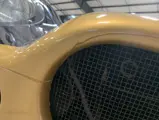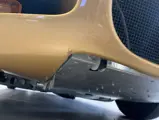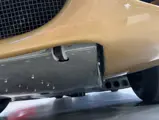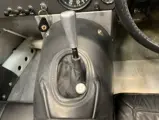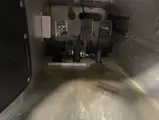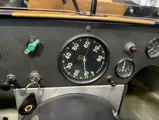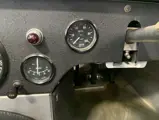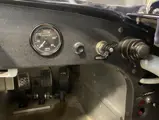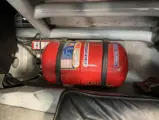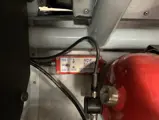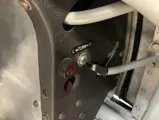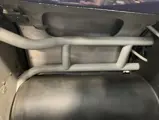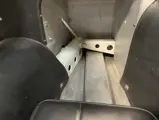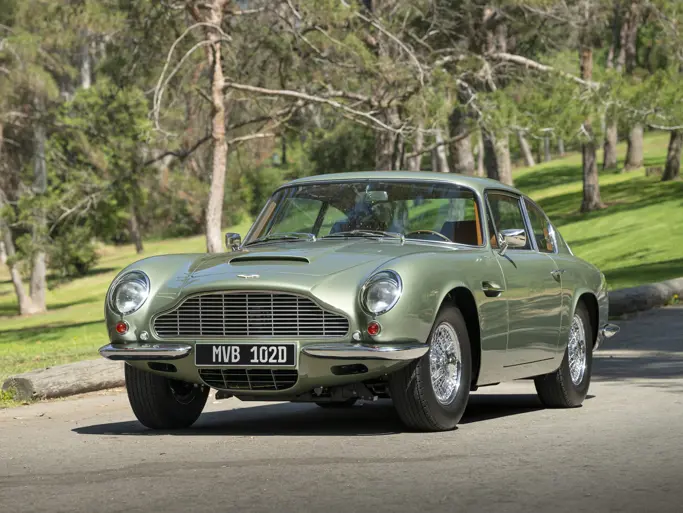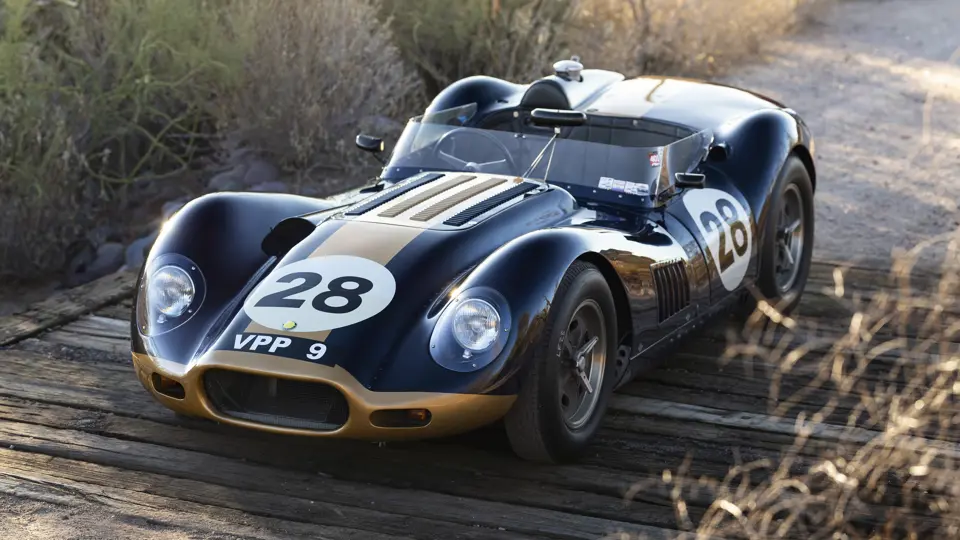
1958 Lister-Jaguar 'Knobbly'
{{lr.item.text}}
$802,500 USD | Sold
{{bidding.lot.reserveStatusFormatted}}
- Believed to be the only extant Jaguar-powered Works ‘Knobbly’
- The last of three Knobbly-bodied Works cars built for 1958
- Driven by Walt Hansgen, Ivor Bueb, and Bruce Halford in 1958
- Referenced in Powered by Jaguar by Doug Nye and Lister-Jaguar by Paul Skilleter
- Endorsed by the Lister company historian, Robert Edwards
- Extensive historic racing and rally history
Englishman Brian Lister used the facilities of his father’s Cambridge wrought iron shop, George Lister & Sons, as the basis for a career in race car engineering. That work then blossomed into building such sports racing cars in the early 1950s. Starting with an MG platform in 1954, Lister soon graduated to two-liter Bristol engines, which he shoe-horned into low-weight chassis that were packaged with aerodynamic open-nosed bodywork. Famed racer Archie Scott-Brown drove one of these Lister-Bristols to 5th overall and 1st in class at Silverstone in 1954, stunning a field of Jaguar C-Types along the way.
In 1957, customer Norman Hillwood insisted that Lister install a 3.4-liter Jaguar XK engine into his car. This marked the beginning of the engine-chassis mating that bore Lister his greatest acclaim. At the British Empire Trophy at Oulton Park on 6 April 1957, Scott-Brown’s Lister-Jaguar roared to a 1st overall finish, notably besting Roy Salvadori’s Aston Martin DBR1. Lister-Jaguars were well on their way to great success, but one more major innovation remained for the car’s legend to take hold.
In February 1958, Lister introduced his latest model to the motoring press. The new Lister exaggerated the prior car’s gently curvaceous wings, which now converged into a radically sloping bonnet that cleverly masked the tall XK block. Just behind the engine compartment was a lowered cowl that reduced the windscreen’s overall profile, enabling the top of the glass (required to be a certain height by FIA rules) to peer just over the engine compartment and drastically reducing the car’s frontal profile and corresponding drag coefficient.
Unlike Lister’s previous cars, which were largely built in-house, the new model’s body panels were shaped under contract by Williams and Pritchard and were offered to customers in either aluminum or Elektron (magnesium). Mechanical innovations included inboard Girling disc brakes and a larger fuel tank. With the new Lister’s voluptuous proportions, it was little wonder that the car quickly earned its nickname as the “Knobbly.”
Produced from 1957 to 1959, these Listers were quite successful and became the cars to beat. In fact, a Lister won the SCCA national championship in 1958. The cars are closely associated with Archie Scott-Brown, who despite a physical handicap, was a talented and sensitive development driver and a very quick racer. He played an integral role in the development of the Listers, and at his hands, the cars were immediately successful. The effectiveness was not missed by Briggs
Cunningham, who bought two, and for the 1958 season, Jim Hall, Carroll Shelby, and Ecurie Ecosse all had them as part of their stables.
However, Brian Lister was severely shaken by Archie Scott-Brown’s very unfortunate death in 1958 at Spa behind the wheel of a Works Knobbly. He would withdraw from motor racing at the end of the 1959 season, selling off much of his inventory, and putting what was almost certainly an early end to the Lister motor racing exploits. Approximately a dozen Jaguar-powered Knobbly Listers were built, and another ten or so cars with Chevrolet power.
Most Lister factory records have not survived, so the exact details of many of the cars remains unclear. For example, at least three different cars wore the registration number VPP 9, including the magnesium-bodied car in which Scott-Brown was killed. After Scott-Brown’s accident, it is believed that VPP 9 was transferred to this car, a replacement aluminum-bodied Works car which was completed in time to race the Silverstone Grand Prix on 19 July 1958. Driven by Walt Hansgen, the Lister-Jaguar was running 2nd behind Stirling Moss in the sister magnesium-bodied MVE 303, when the clutch failed. The following week, Hansgen won twice at Snetterton in VPP 9, in the unlimited class and the Formula Libre race, setting new lap records both times. Ivor Beub went on to win at Brands Hatch in August and at Snetterton in September.
After Lister withdrew from racing, this car was sold to the United States, where it appears to have raced in SCCA events. The Lister-Jaguar was subsequently discovered in the US with a large SCCA badge still affixed to its dash and was returned to the United Kingdom in 1970 by Anthony Hutton and John Harper. At the time, the aluminum body showed signs of a previous rear air intake, as only featured on the Works cars, as well as Works bolt-on hubs. However, the Lister was mistaken for its sister and erroneously registered as MVE 303. The car was fully restored by John May and appeared in the Works green and yellow livery for its first historic race on 15 July 1972. The car was driven by John Harper, who would extensively campaign the Knobbly with great success well into the 1980s at Silverstone, Le Mans, Brands Hatch, and other venues. Notably, Paul Skilleter discusses the car at length in his book Lister-Jaguar having attended many races with the Lister’s owner. Skilleter described this car as “the most actively-raced Lister-Jaguar and the most consistently quick…it was the car to beat.”
In the 1990s, the Lister was acquired by Dr. Philippe Renault, and then Dietrich von Boetticher, both notable and enthusiastic vintage racers. In 1996, the car was acquired by Frank Sytner, a prominent British historic racer. Sytner brought the car to the first Goodwood Revival Meeting in September 1998 and had much of the service work performed by John Pearson, who also handled the car for several of its previous owners. In the early 2000s, the car was sold on to a prominent collector in the United States, who had Phil Reilly & Co. rebuild the engine. The car was raced extensively at a wide variety of venues during this period, including Laguna Seca, Coronado, Chuckwalla, Willow Springs, Buttonwillow, Thunderhill, Las Vegas, Firebird, Sears Point, Lime Rock, Mont Tremblant, and Le Mans. Further race preparation and upkeep were performed during this period, primarily by Terry Scarborough Racing. The Lister-Jaguar was then acquired the current consignor in 2010, who has continued to race and rally the car over the ensuing decade.
The engine compartment is prepared to high standards and is extremely clean and well detailed. The 3.8-liter wide-angle, dry-sump D-Type engine, fitted by Anthony Hutton and John Harper, was built to competition specifications, though it is noted to run well on regular pump gas. The undercarriage is quite clean as well, and gives a look at the car’s sophisticated specification, which includes de Dion rear suspension and disc brakes all around, inboard at the rear. The interior is trimmed to a high standard in leather and features an upholstered passenger area and center console, making the car suitable for street use. Indeed, its current owner drove the car on the 1,000-mile Jaguar C- and D-Type tour (for which such Listers are also eligible).
The car comes with extensive documentation and spares package, including period newspaper clippings of the car’s exploits, dozens of prints of it racing in period, and a file of invoices from the restoration and maintenance. There is also correspondence from several specialists, as well as FIA papers issued in the late 1990s. The spares package includes original fuel and oil tanks, center section of bonnet without louvers, muffler for street use, noise restrictors, roll bar, spare driver’s bucket seat, tonneau cover, and many other items. It is currently street registered.
Several experts who have inspected this car have added their support, including Chris Keith-Lucas, the late Robert Gawthrop (who built the Lister chassis in period), as well as the Lister factory themselves, who have all commented on its authenticity and correctness. This is further supported by contemporary metallurgical tests showing that the composition of the chassis is consistent with that of other correct Lister-Jaguars. On file is also a letter from Lister that confirms that they constructed chassis BHL 119 in 1958. Further factory endorsement came from Lister company historian, Robert Edwards, who drafted such approval of the car in 2018.
This is an exceptional opportunity to acquire a world-class sports car with a fascinating history. Highly competitive in period and in vintage racing today, this car is beautifully restored and highly documented. Suitable for both racing and street use, this Lister-Jaguar is a genuine dual-purpose sports racer that is eligible for a wide variety of prestigious driving events.




